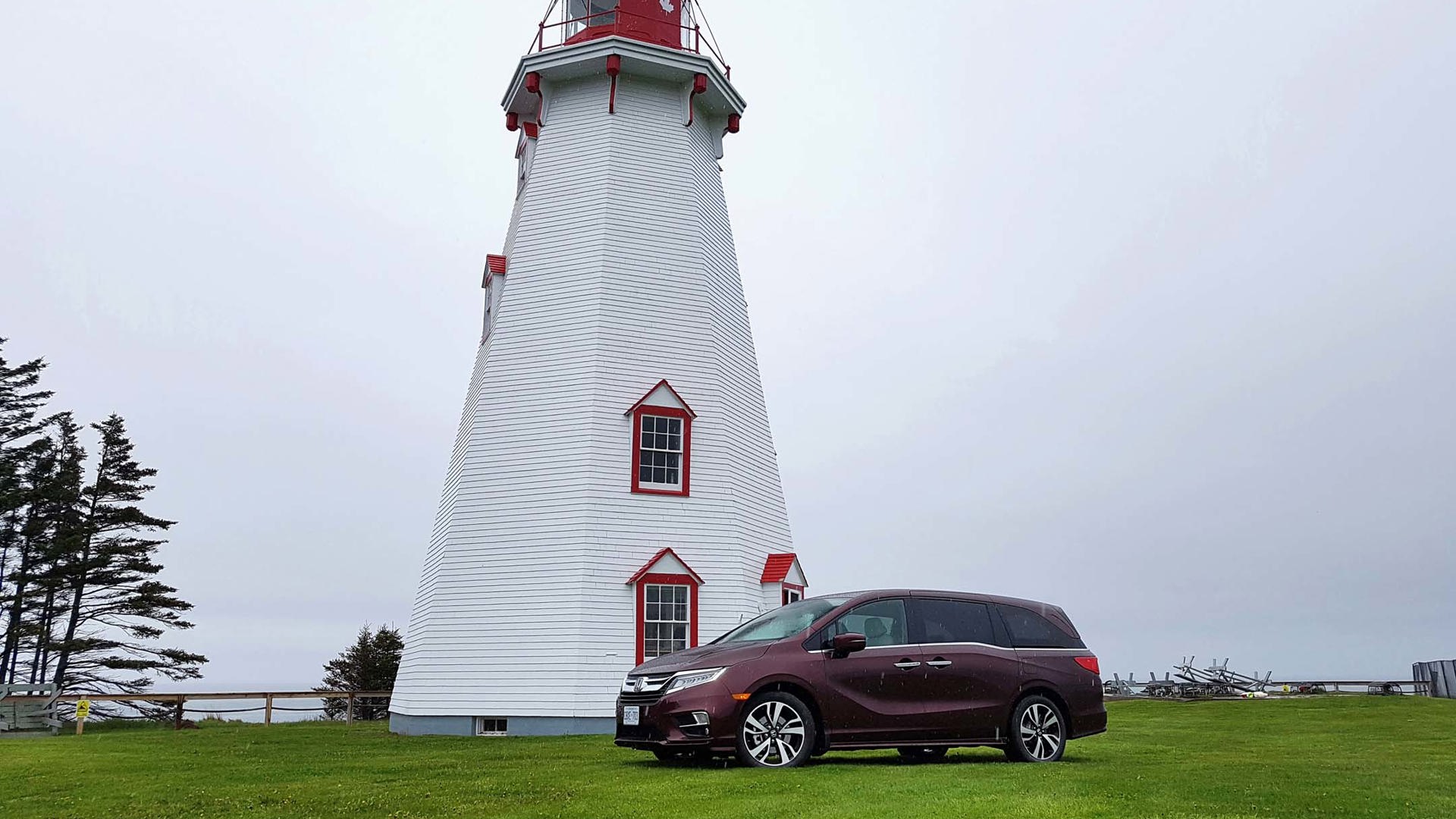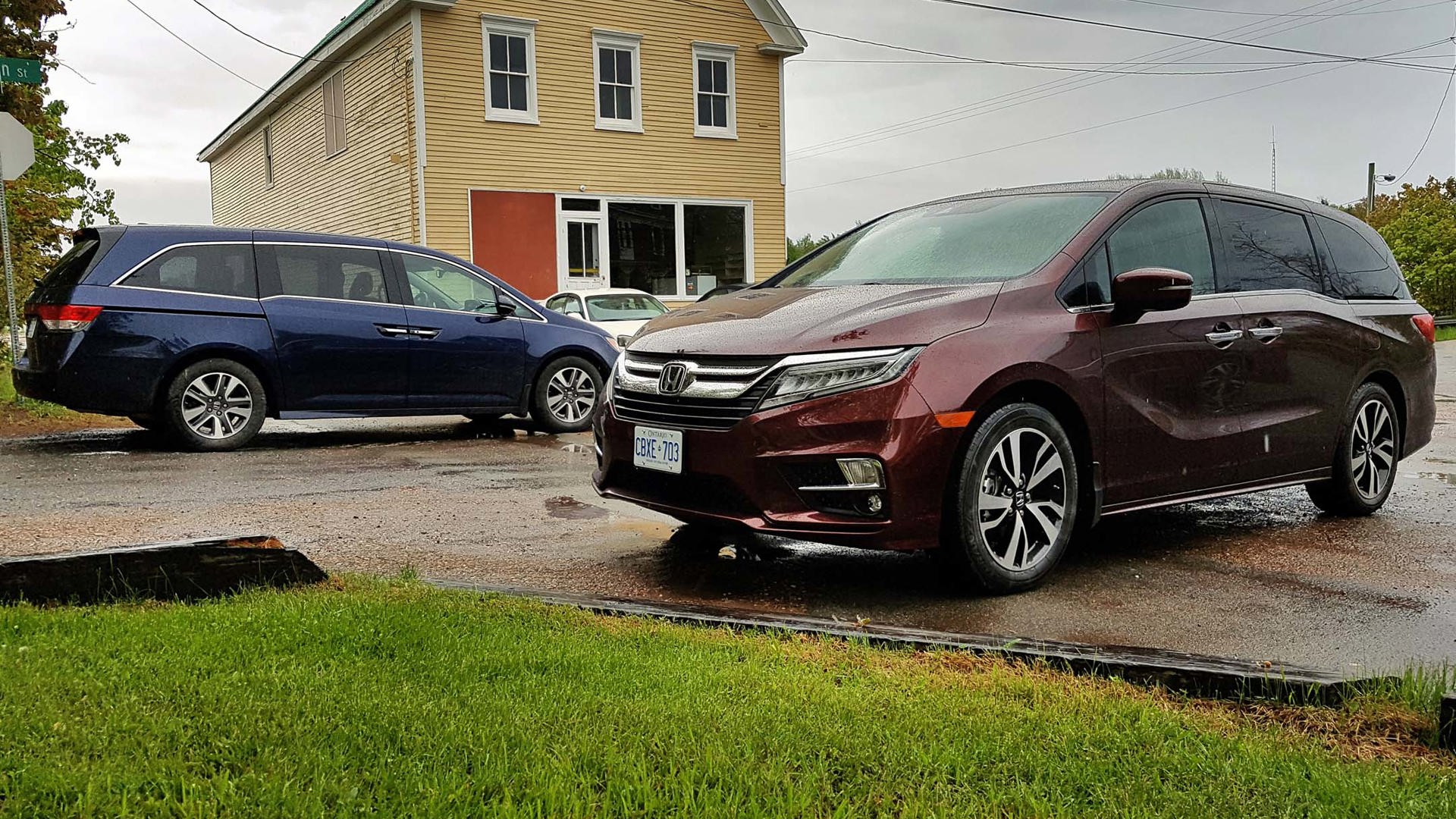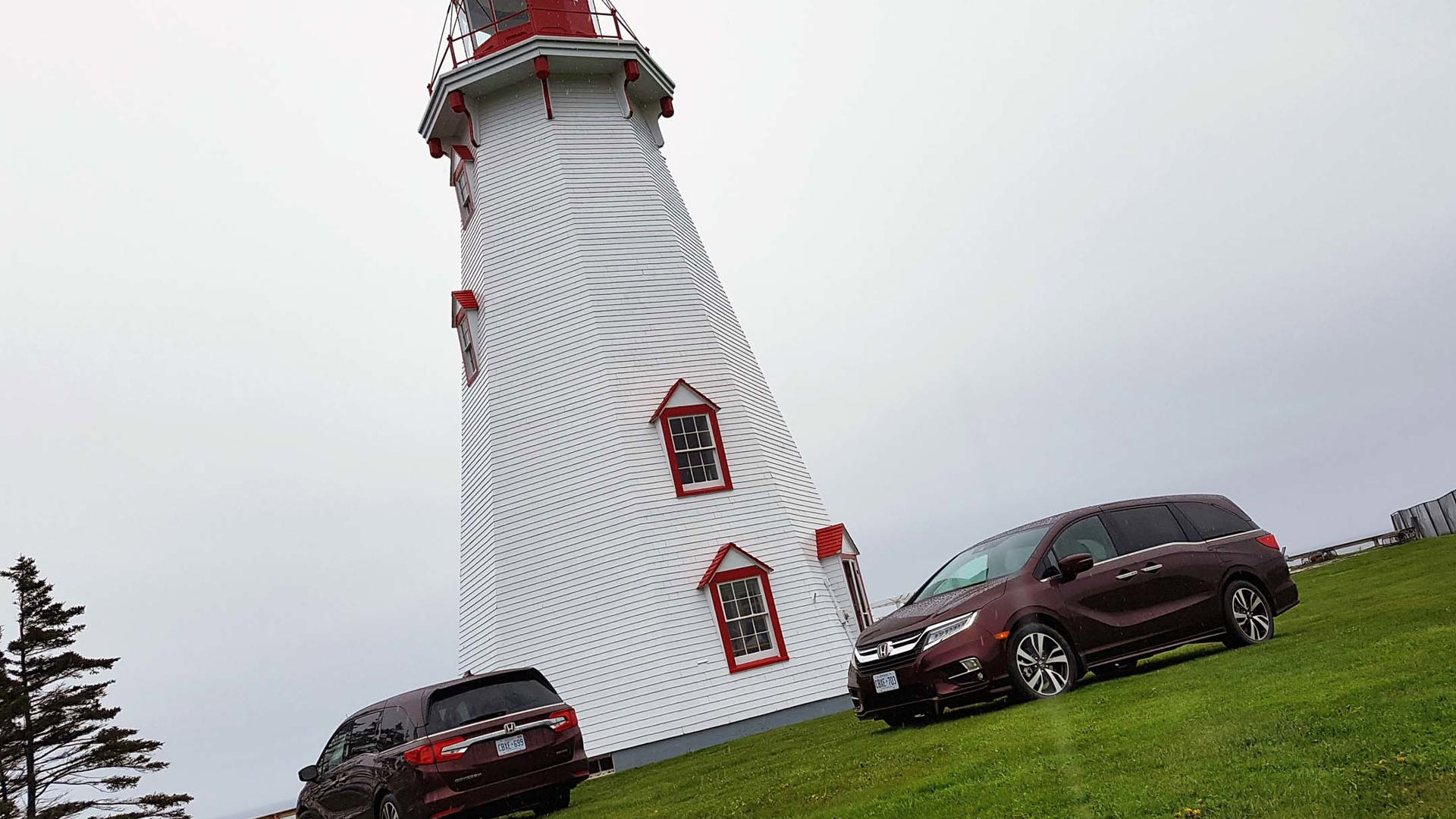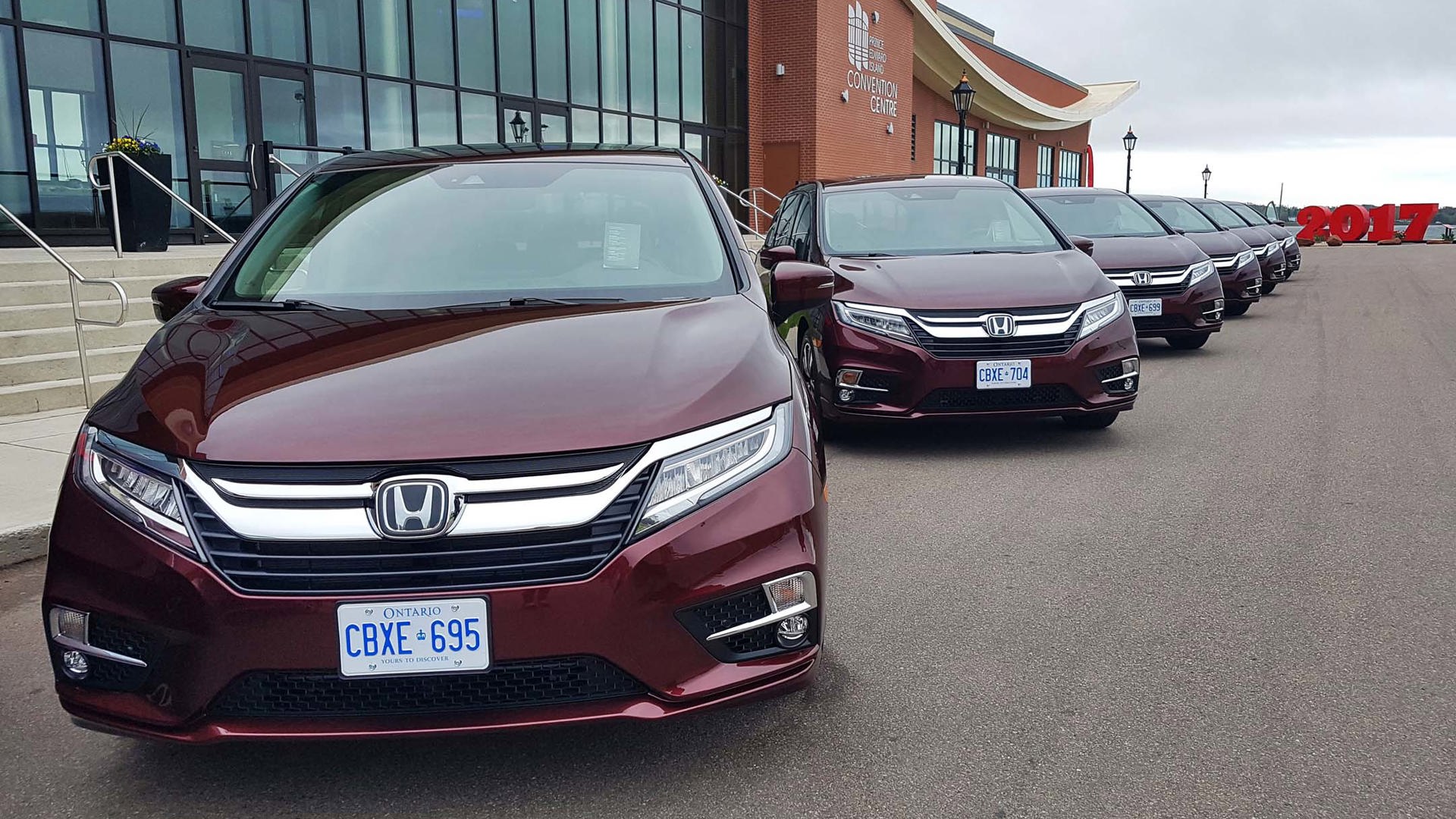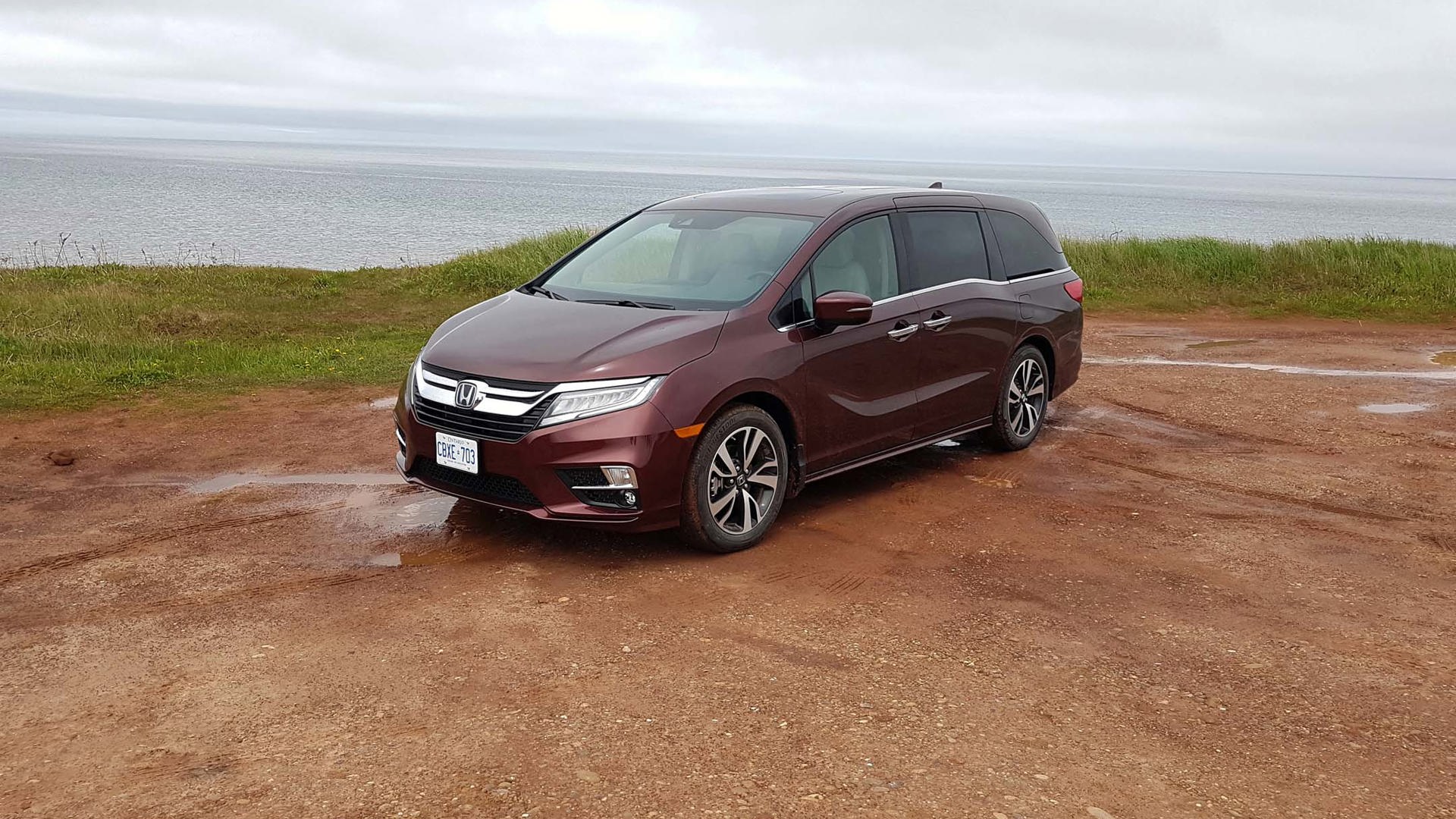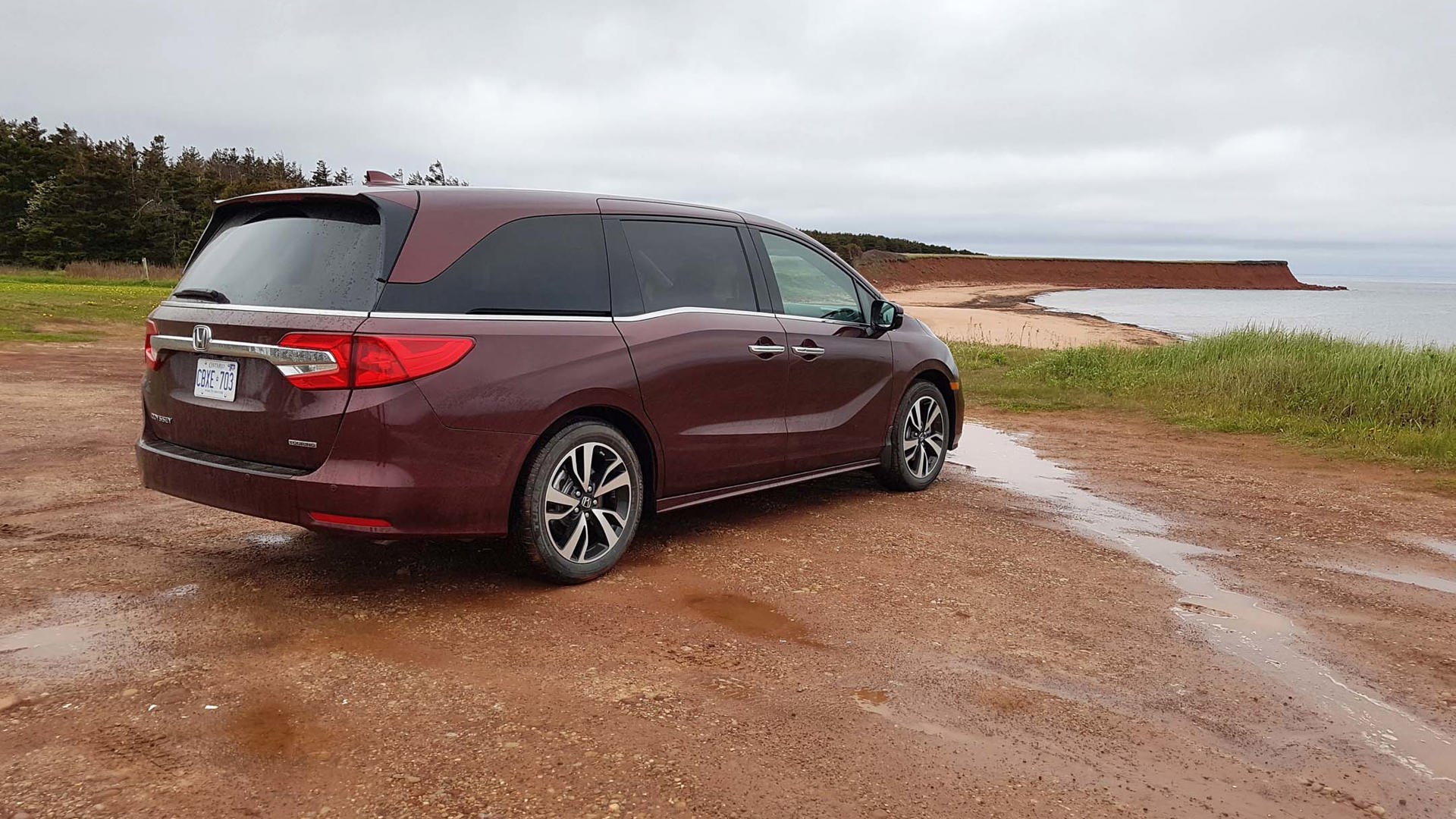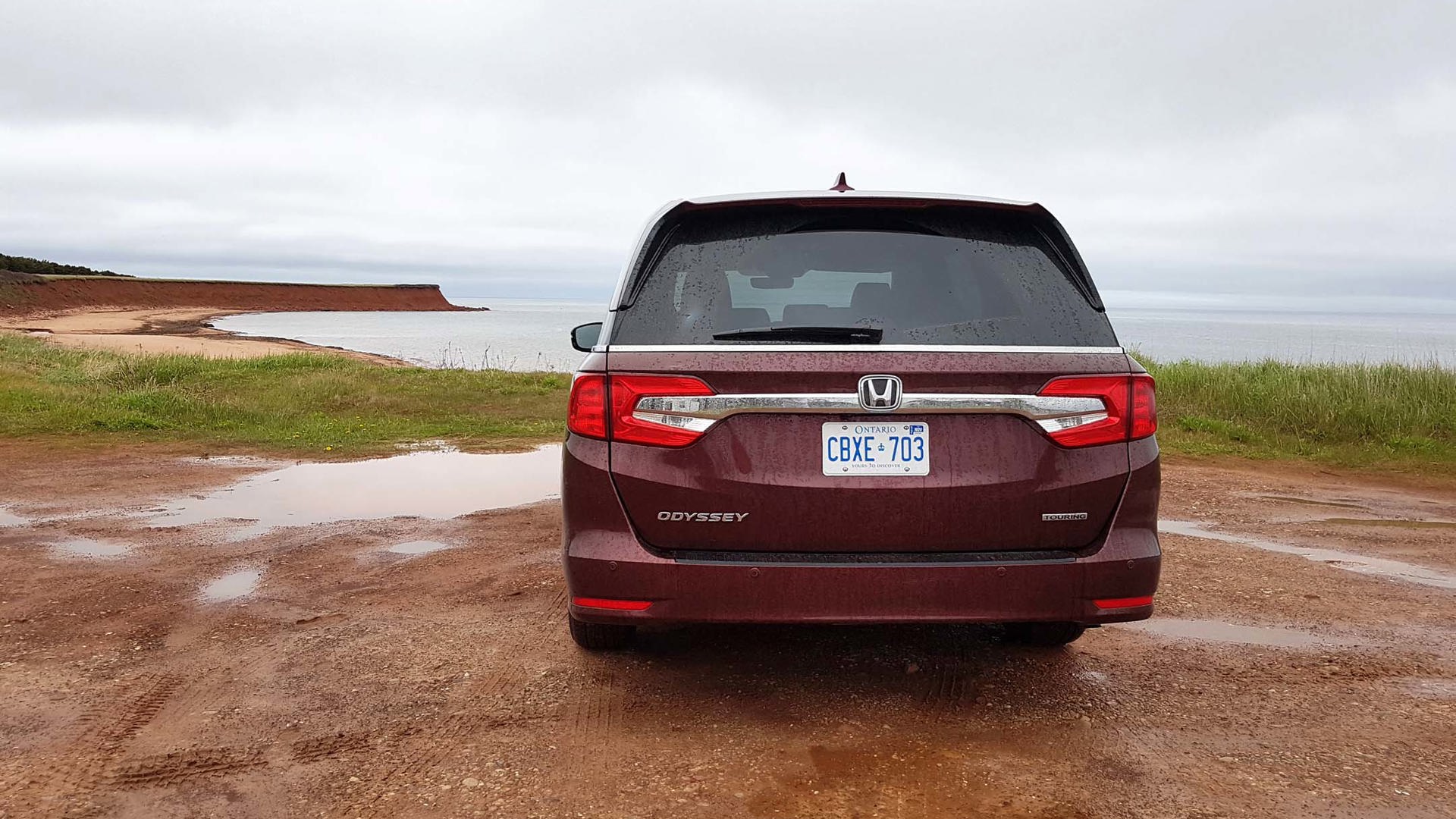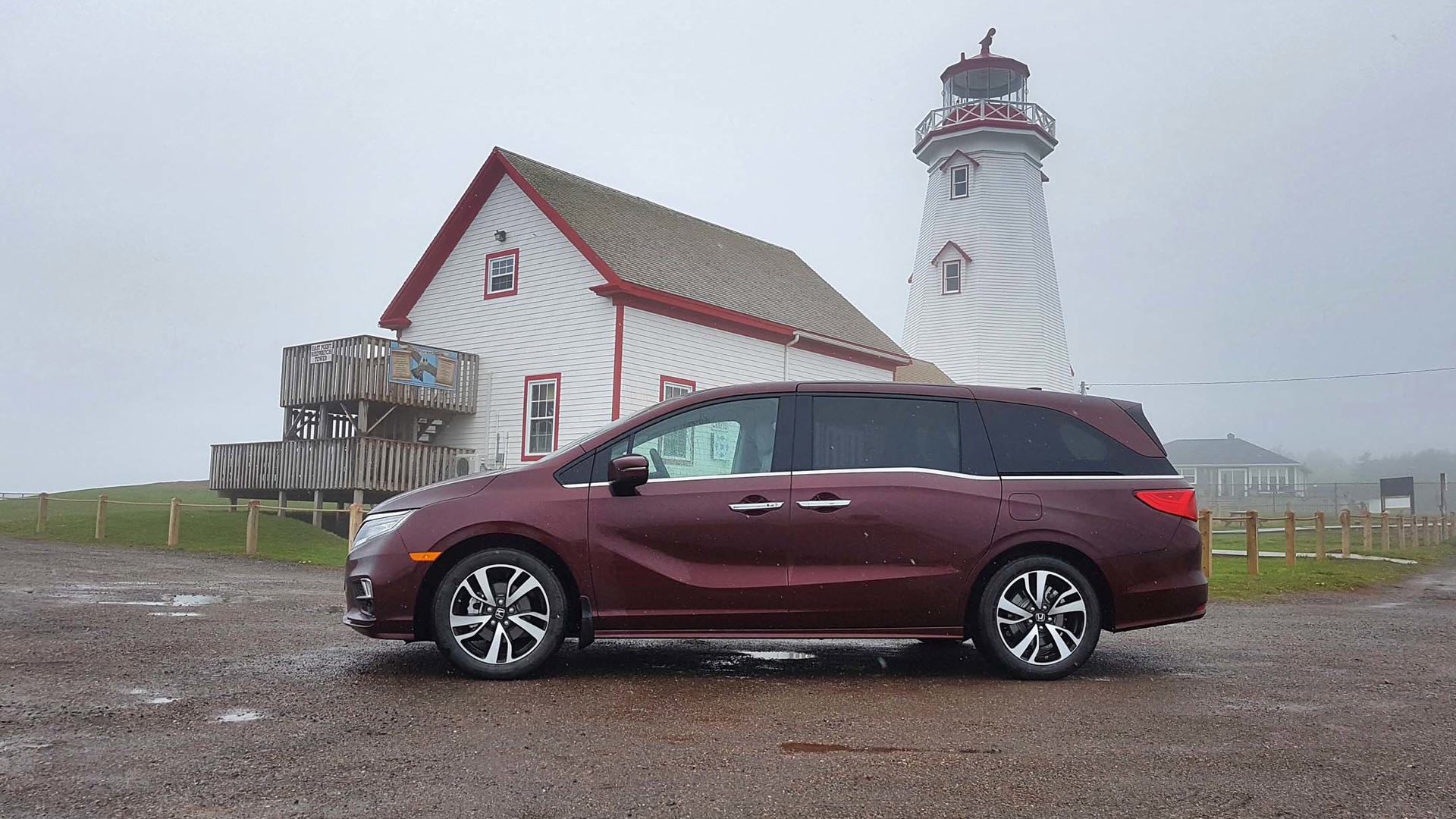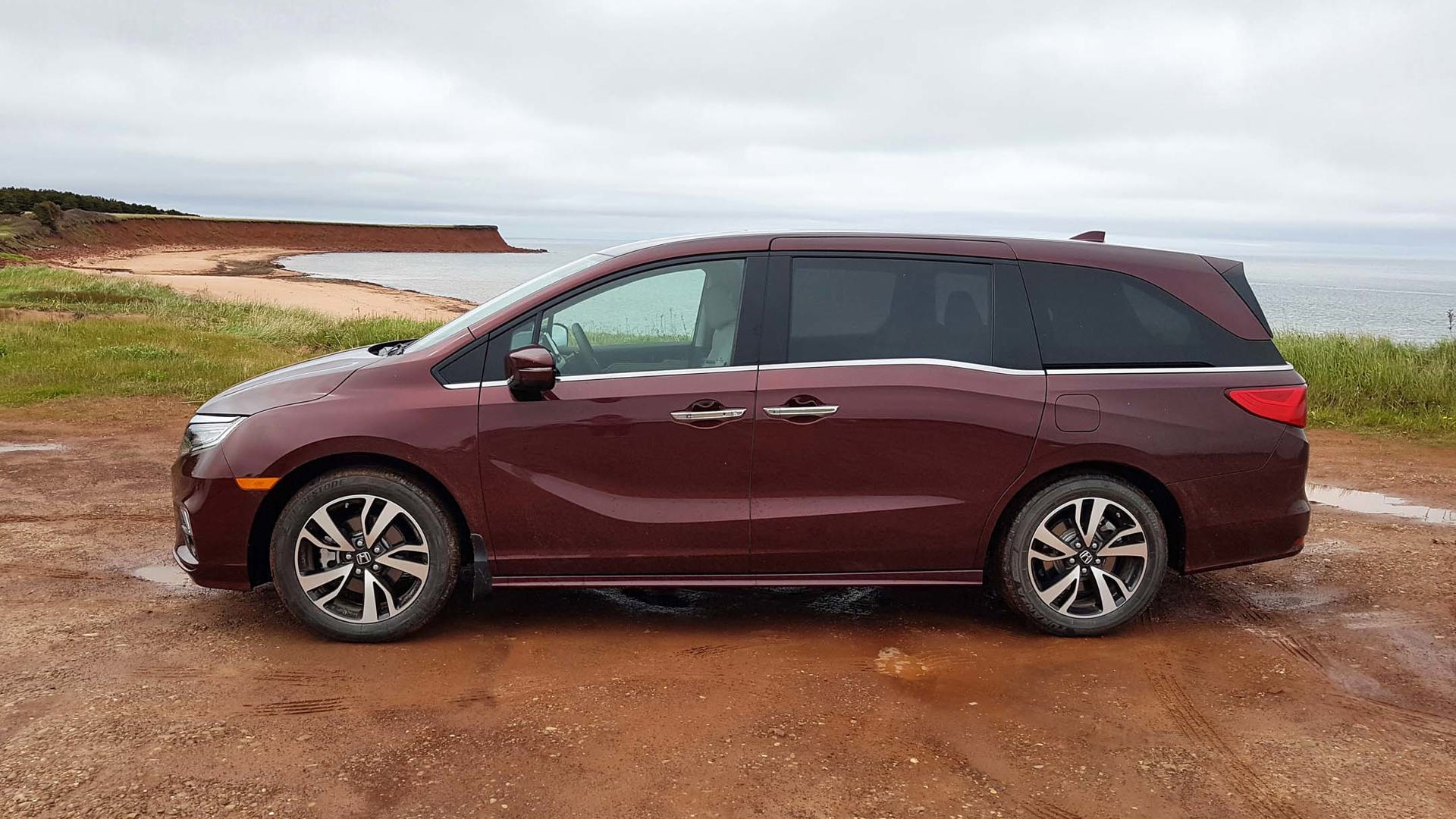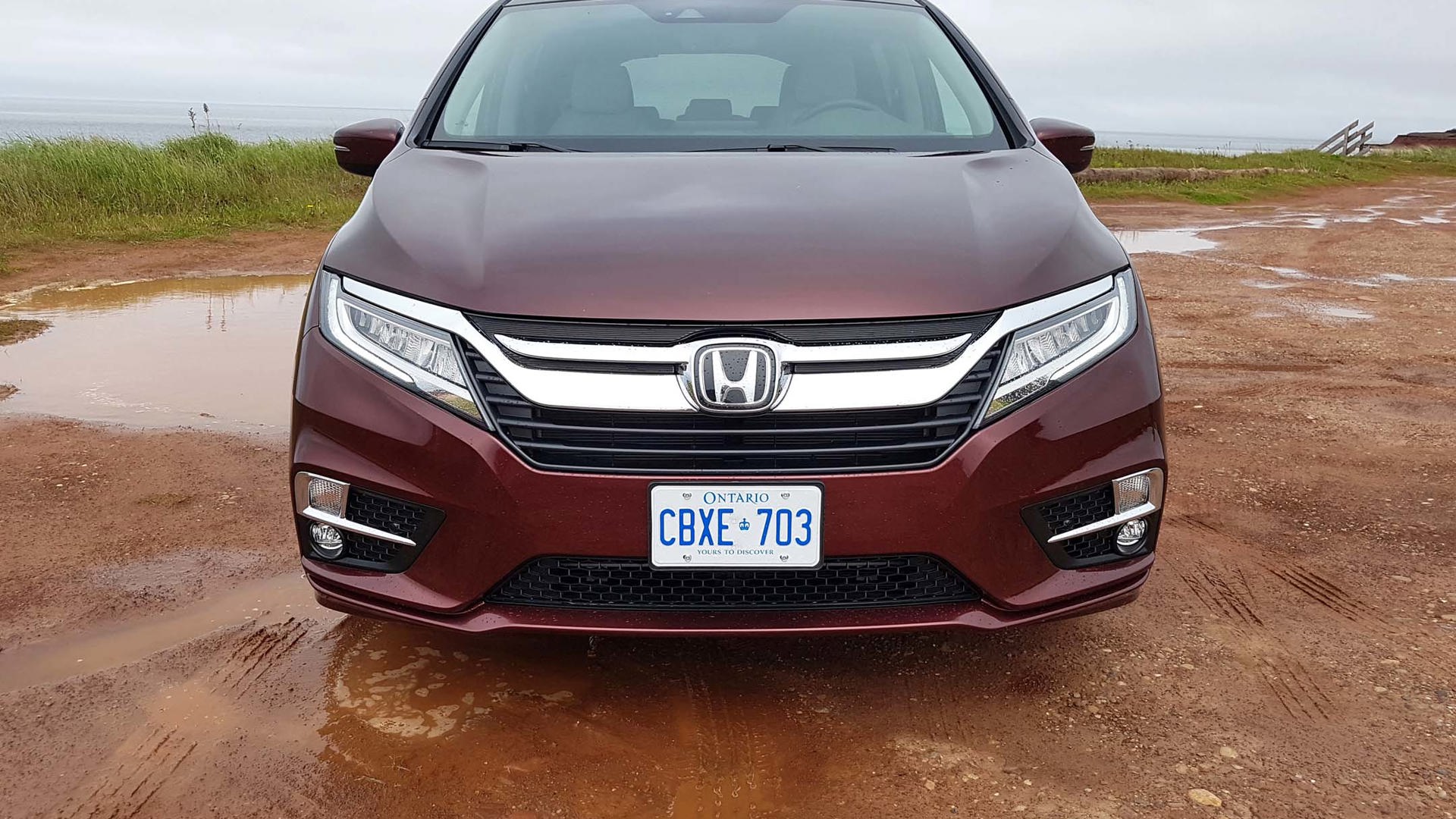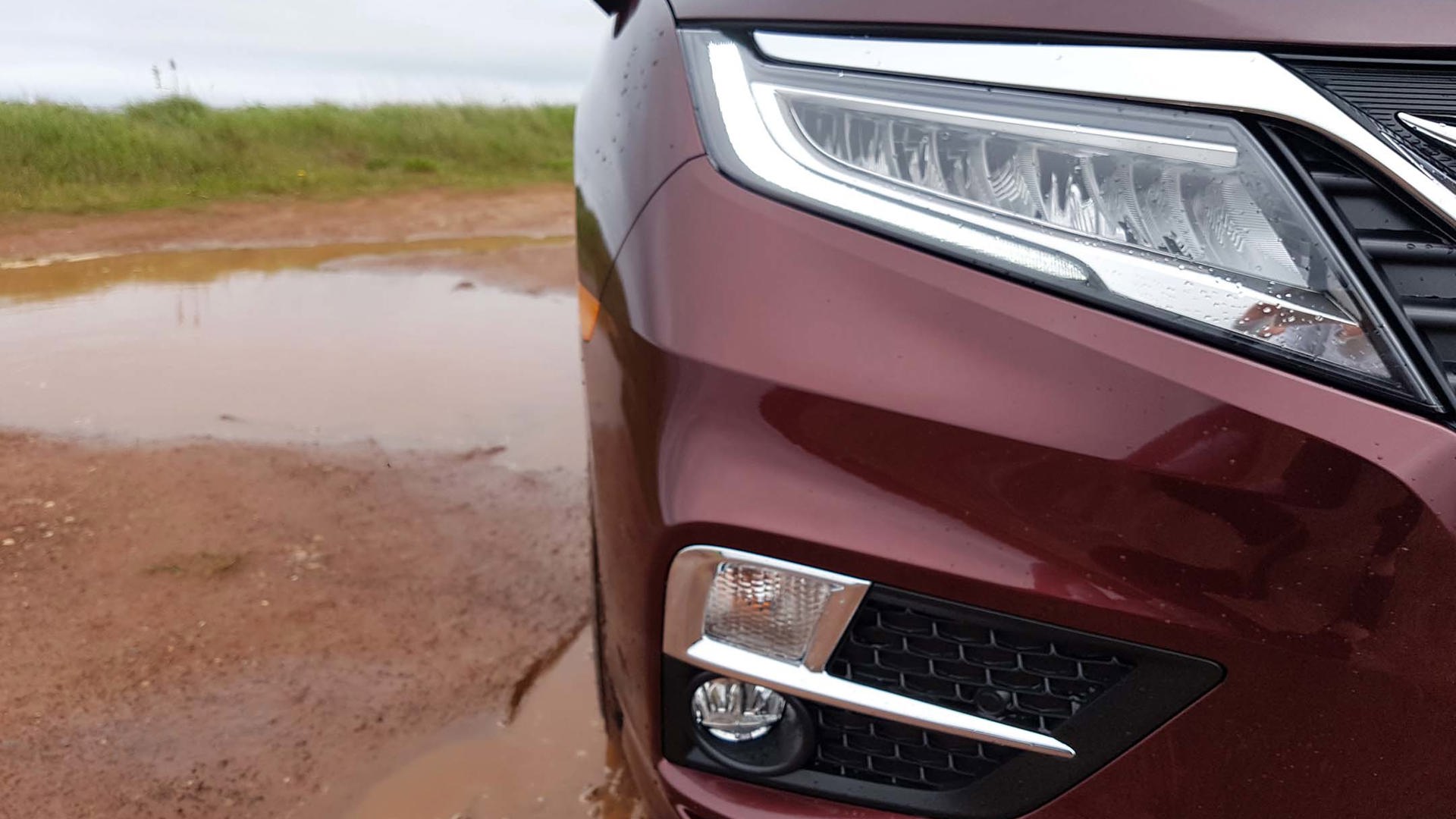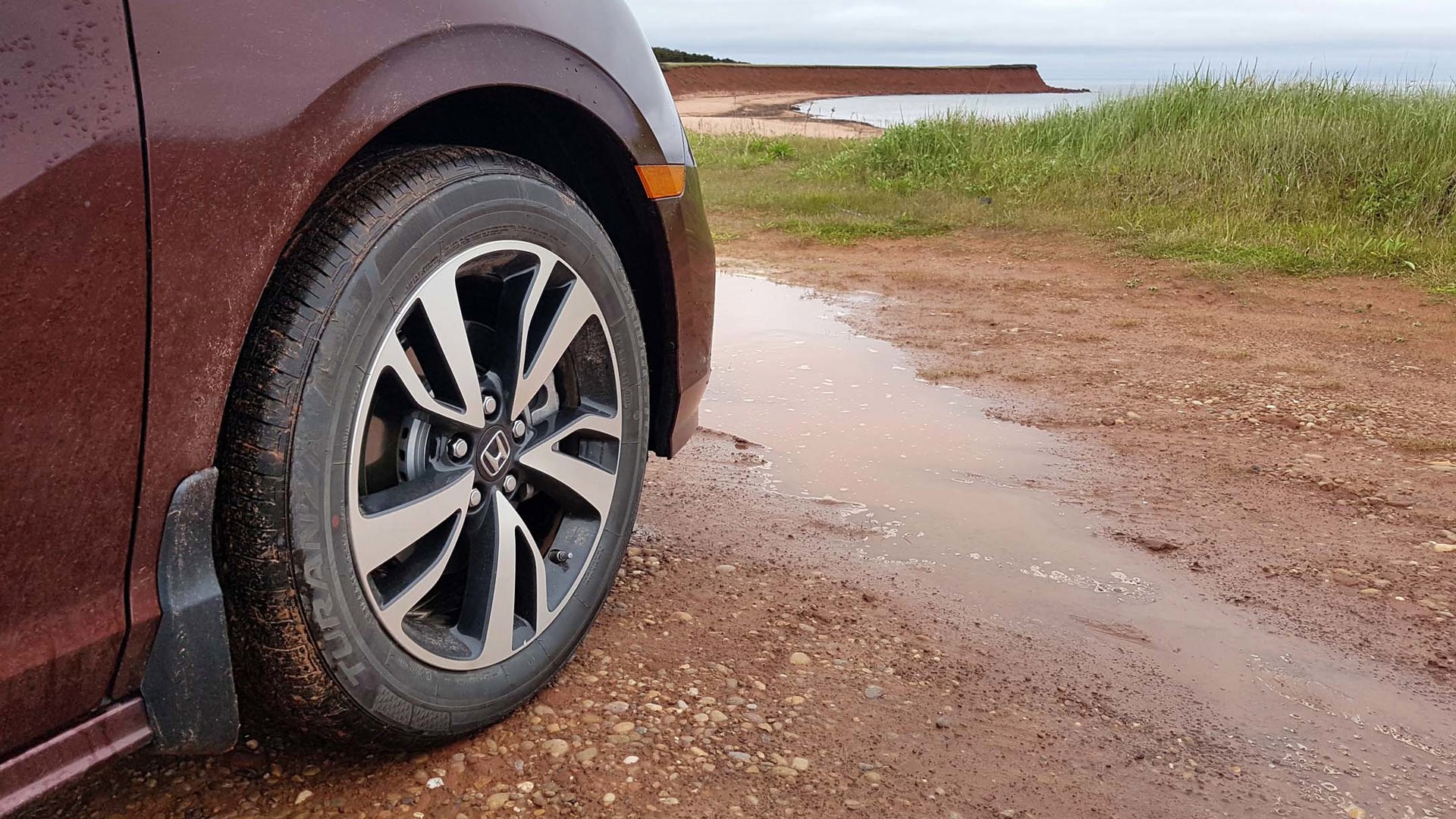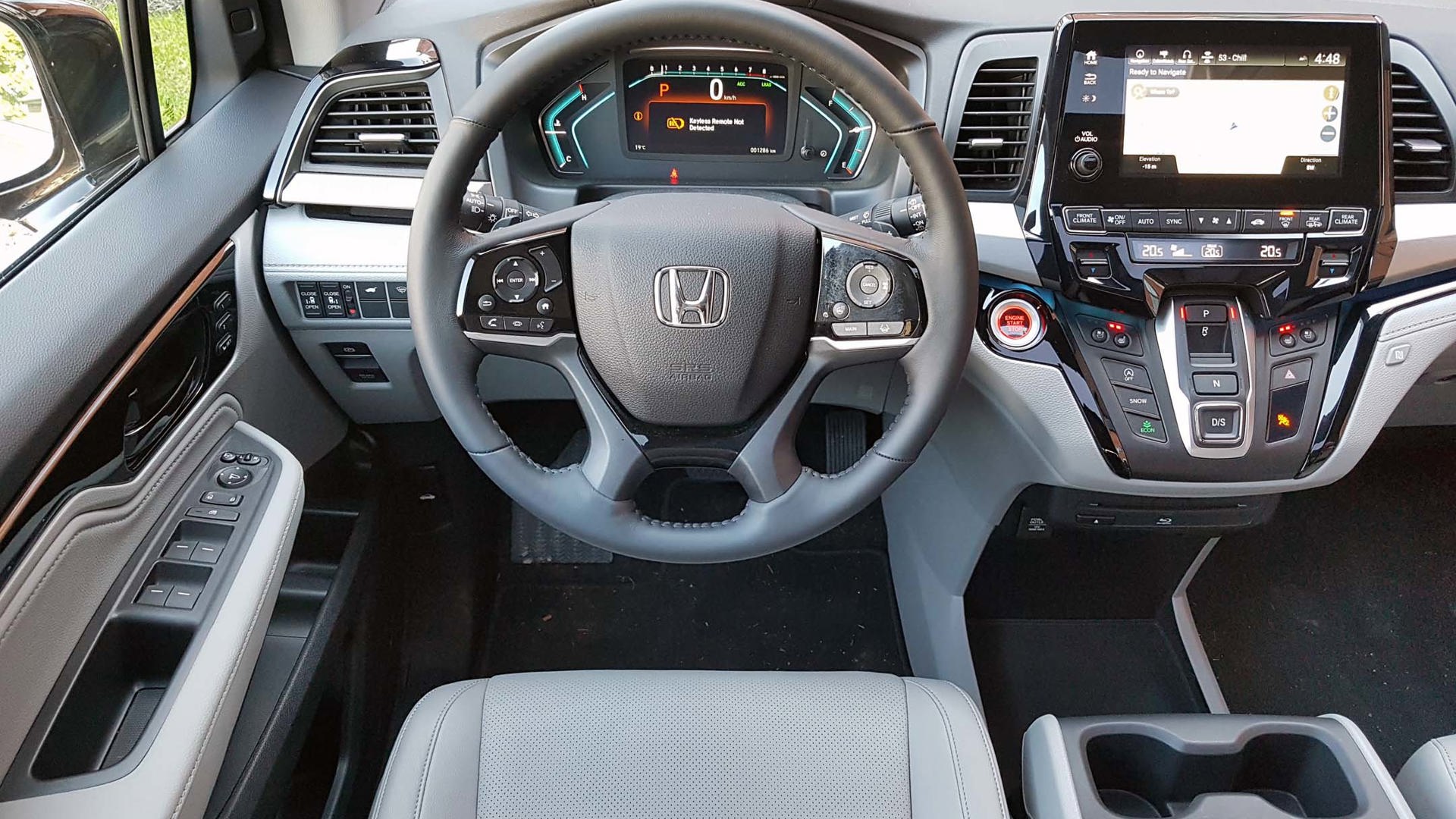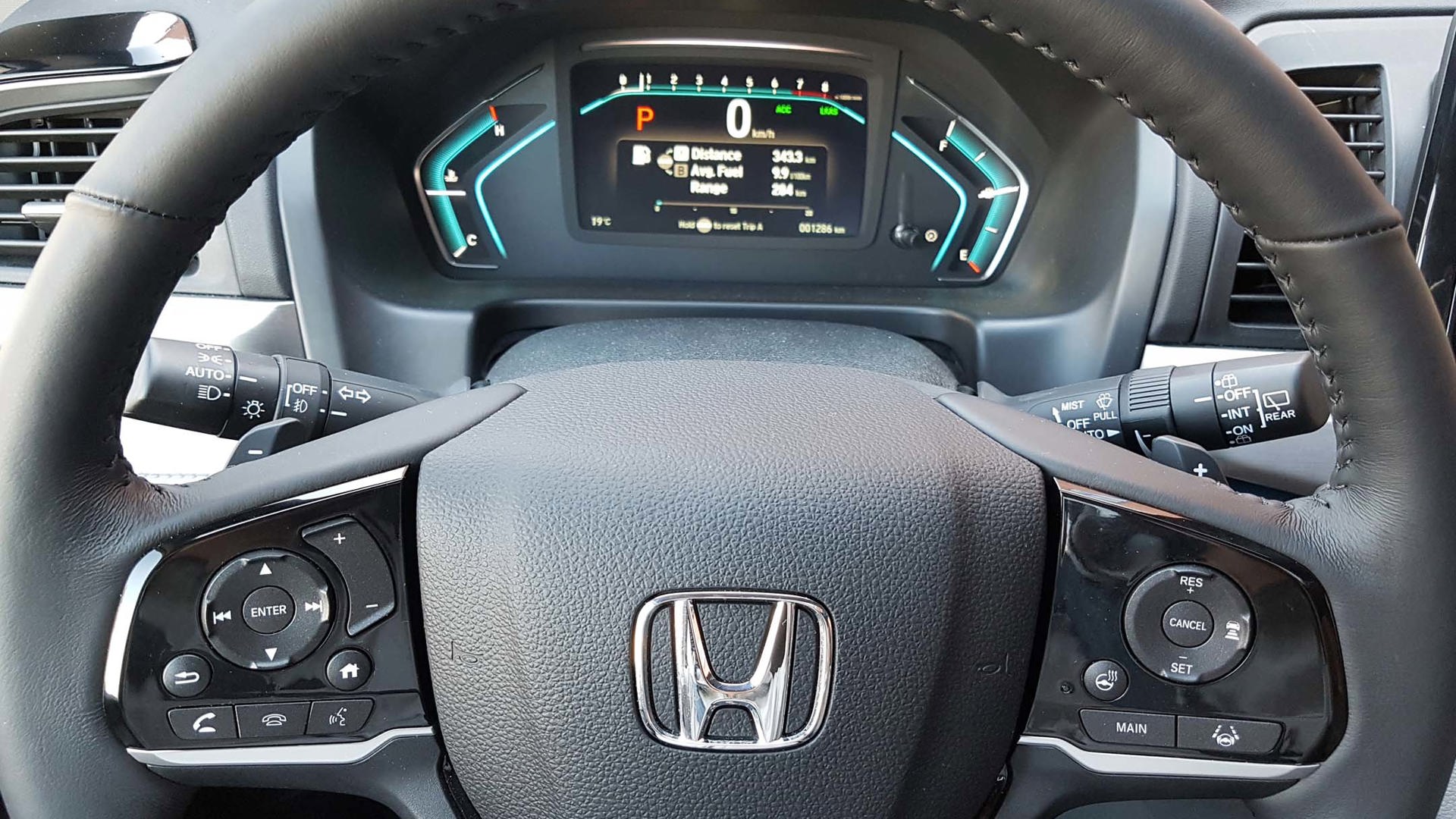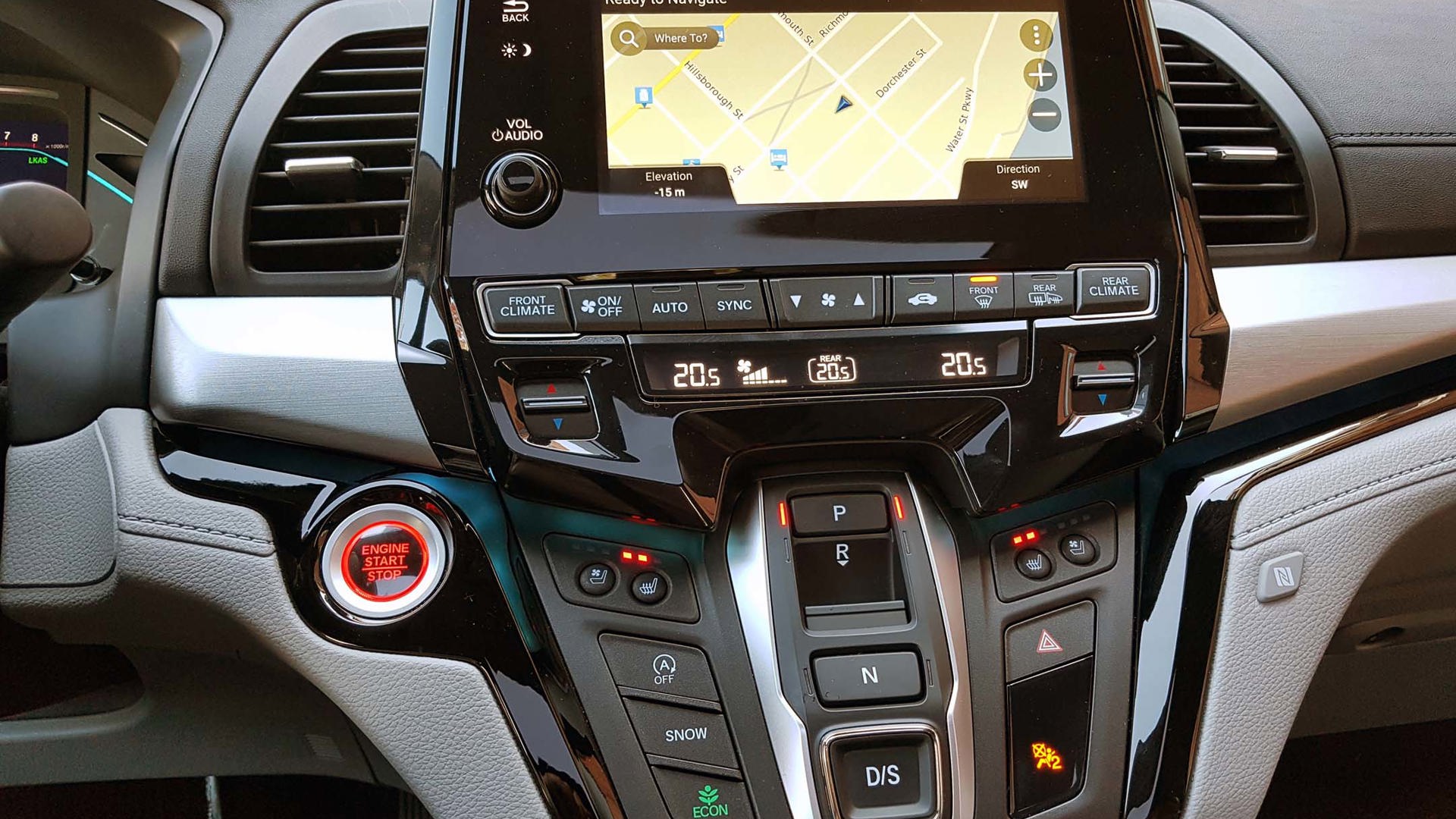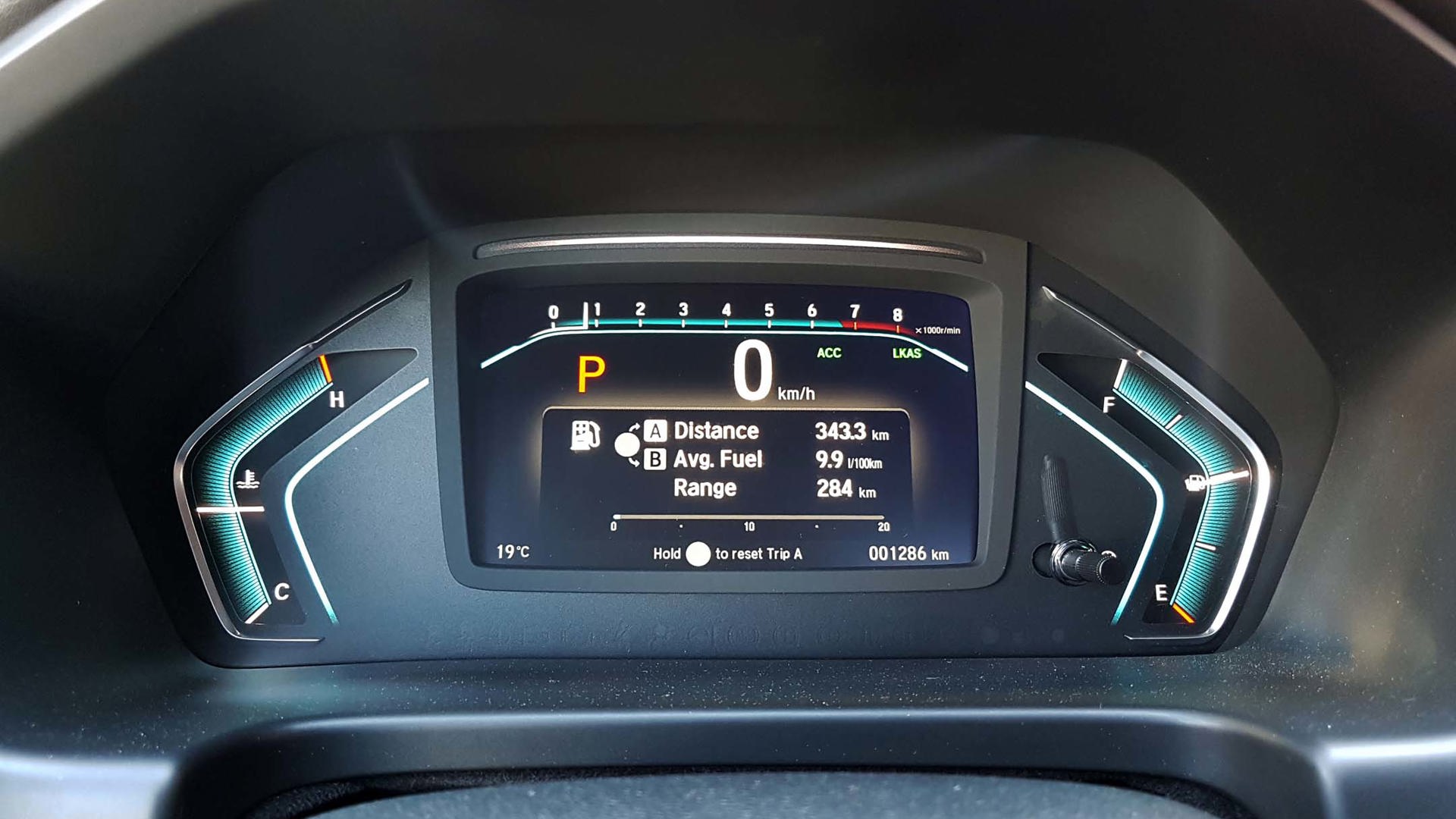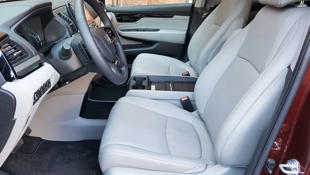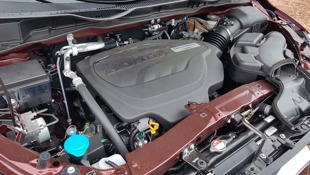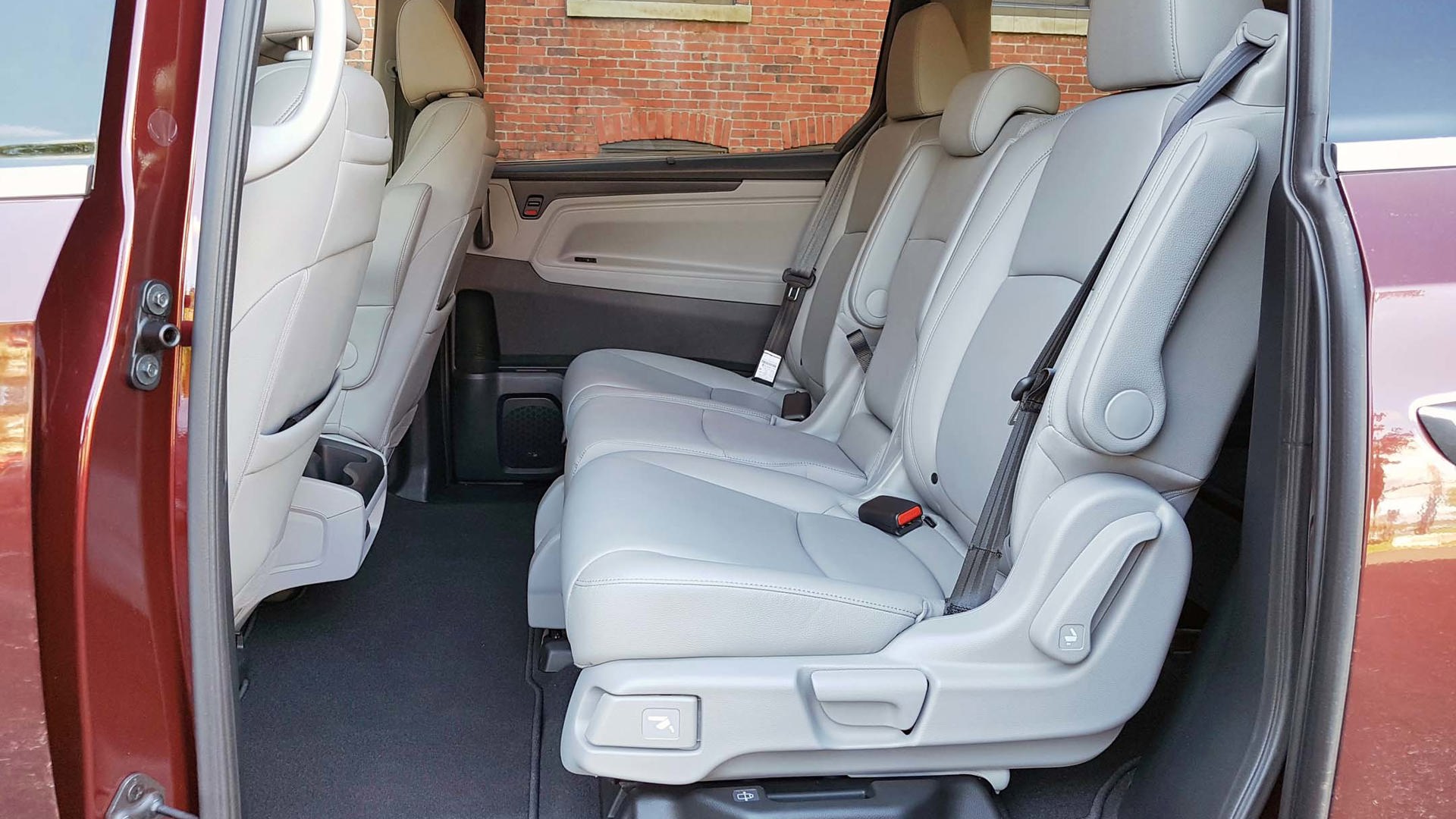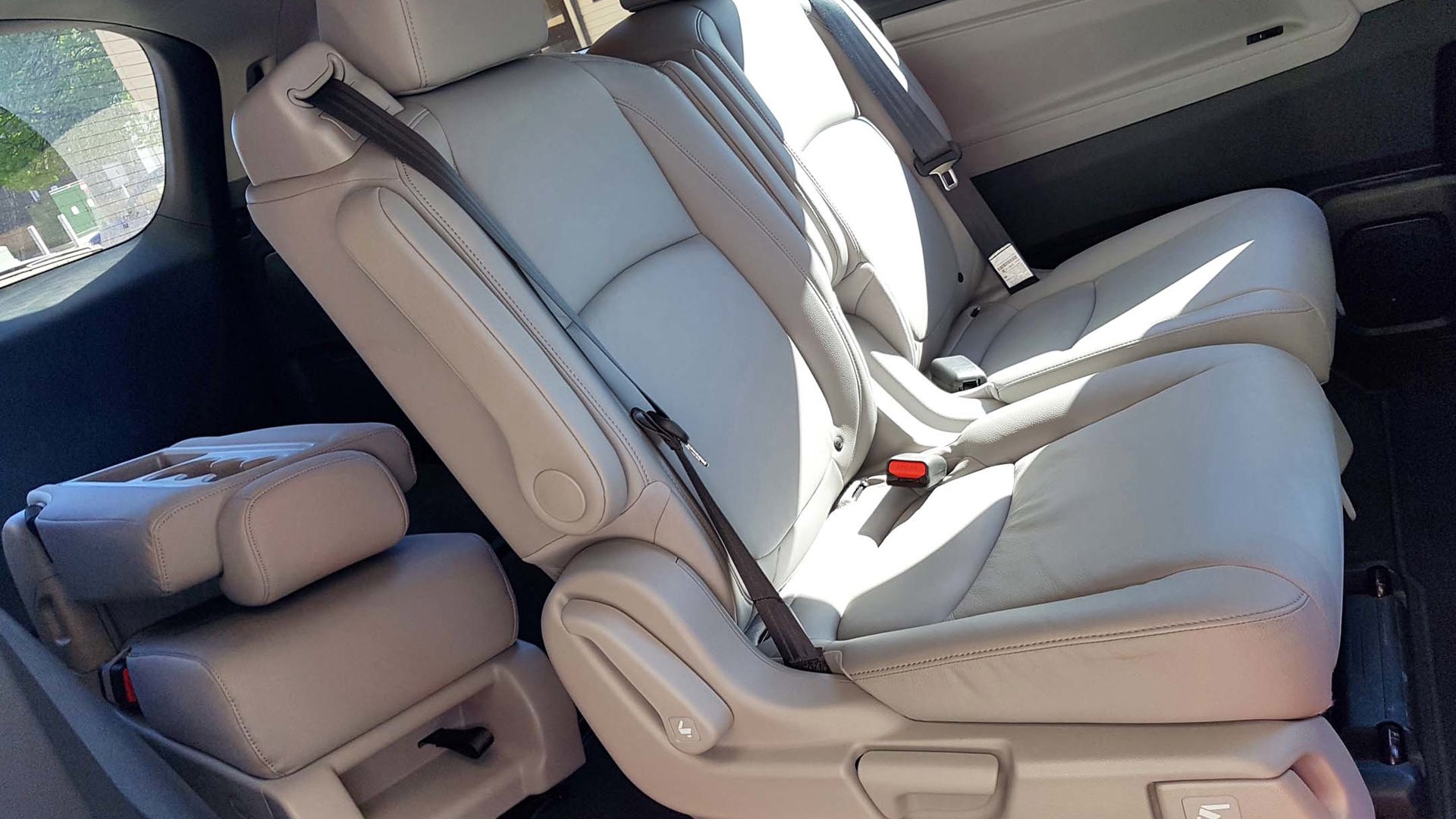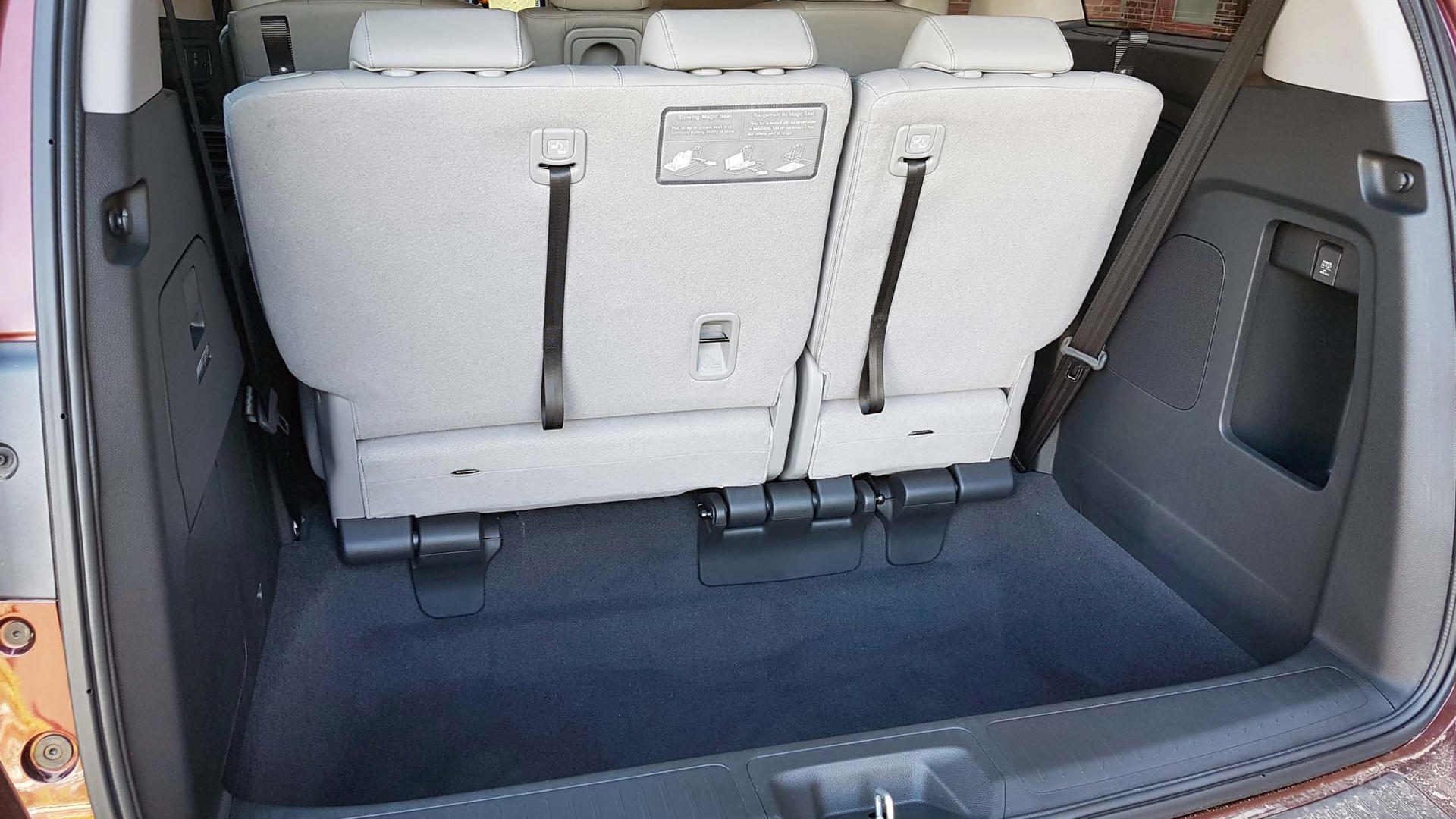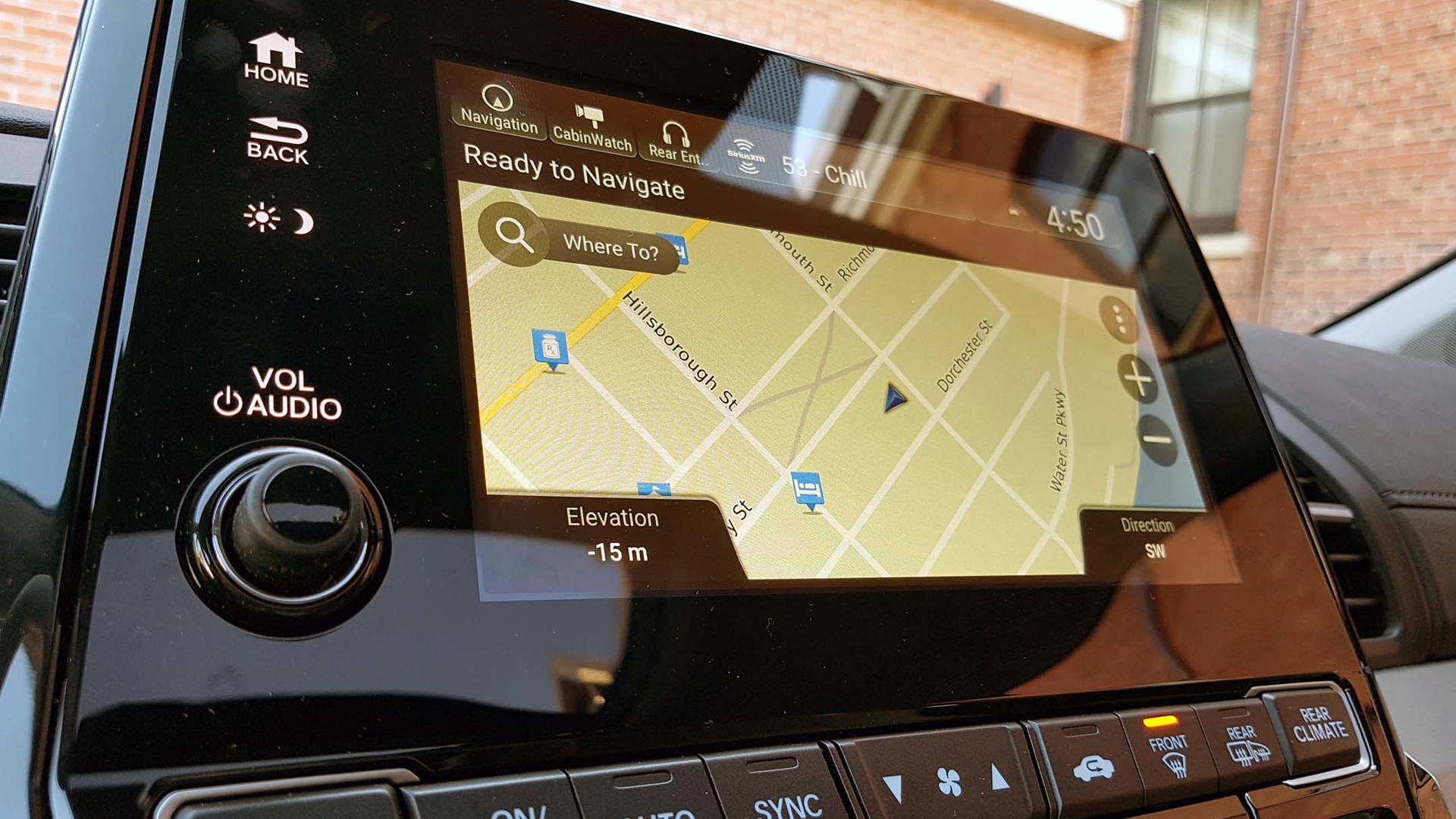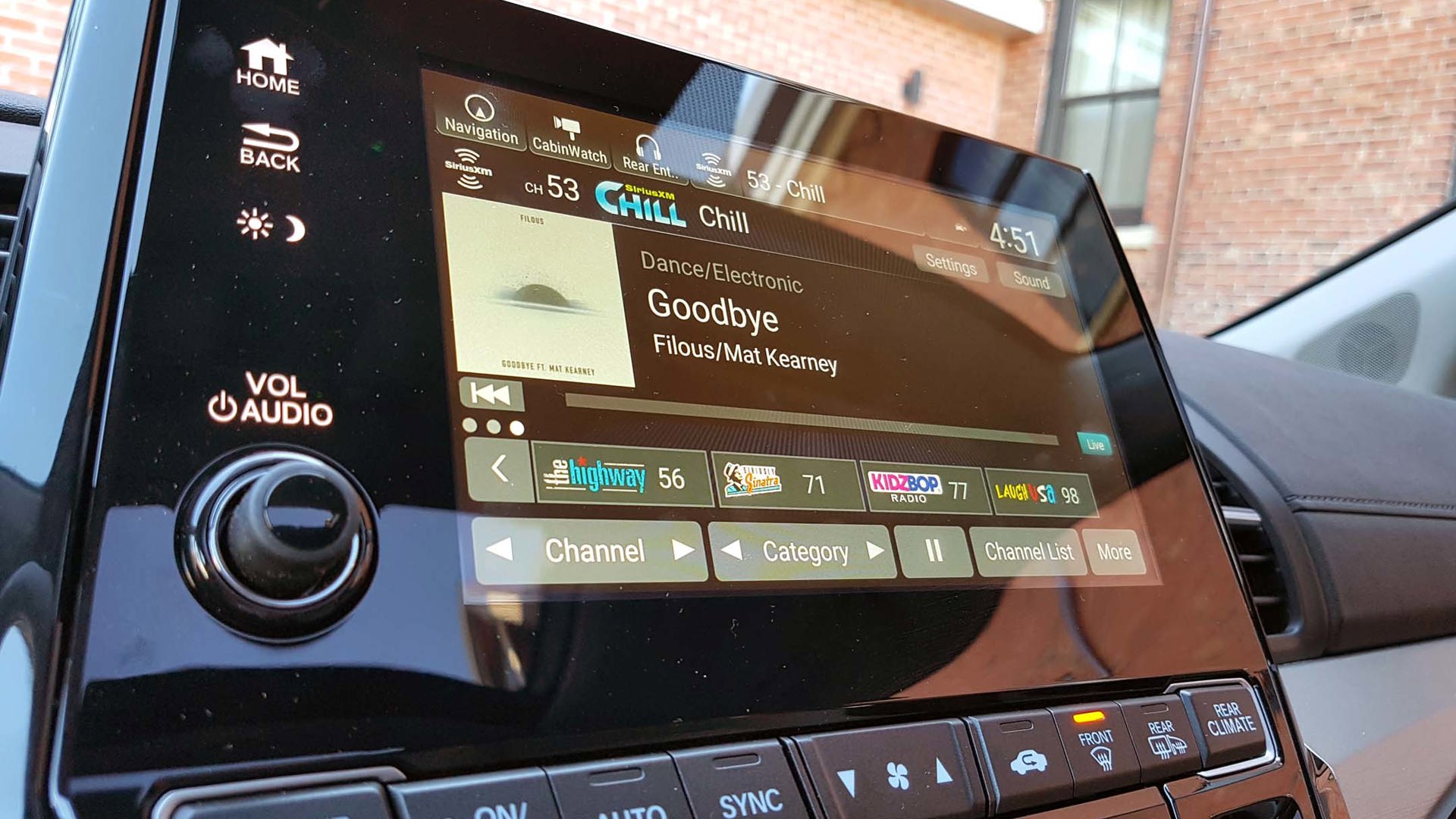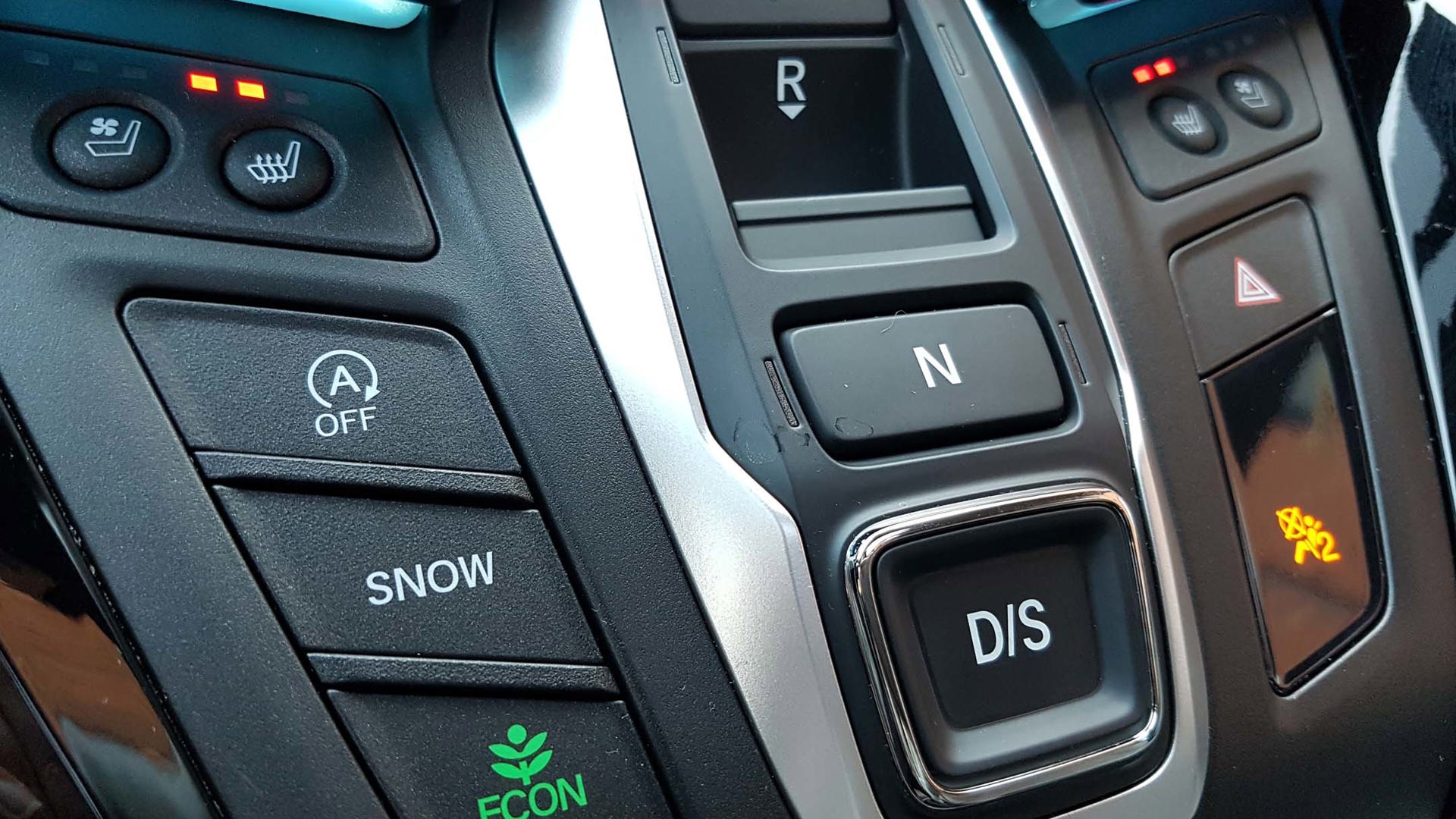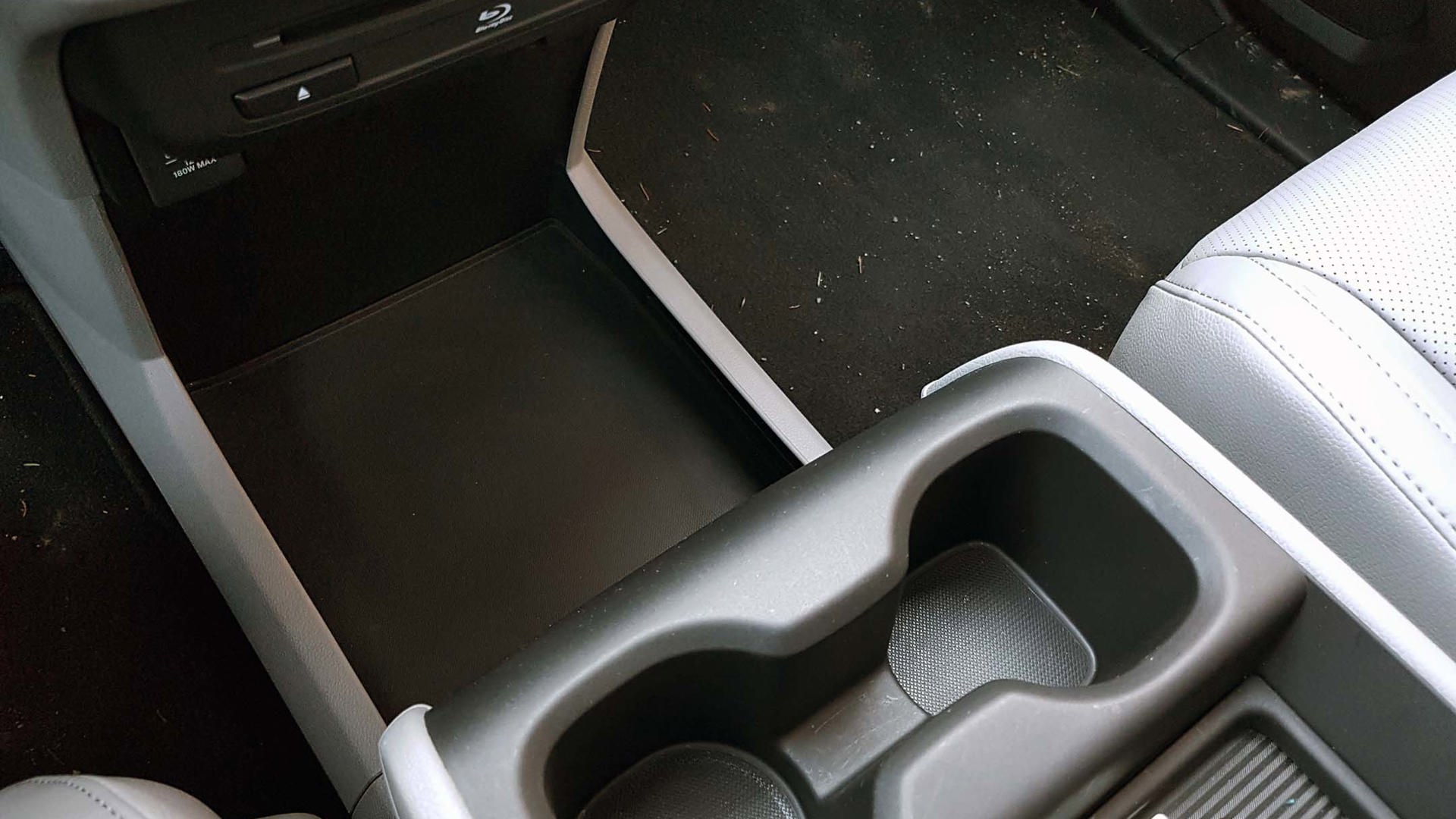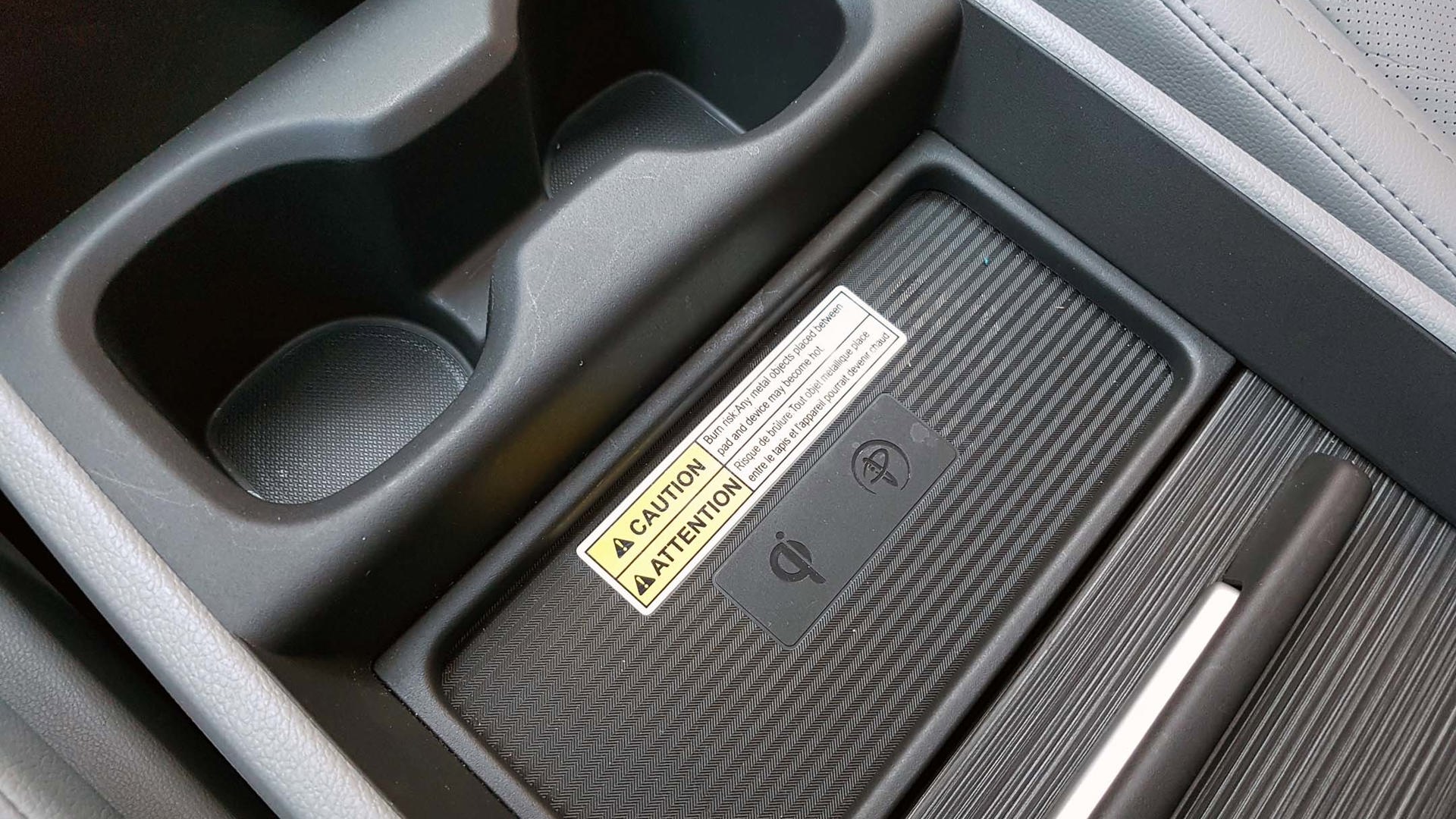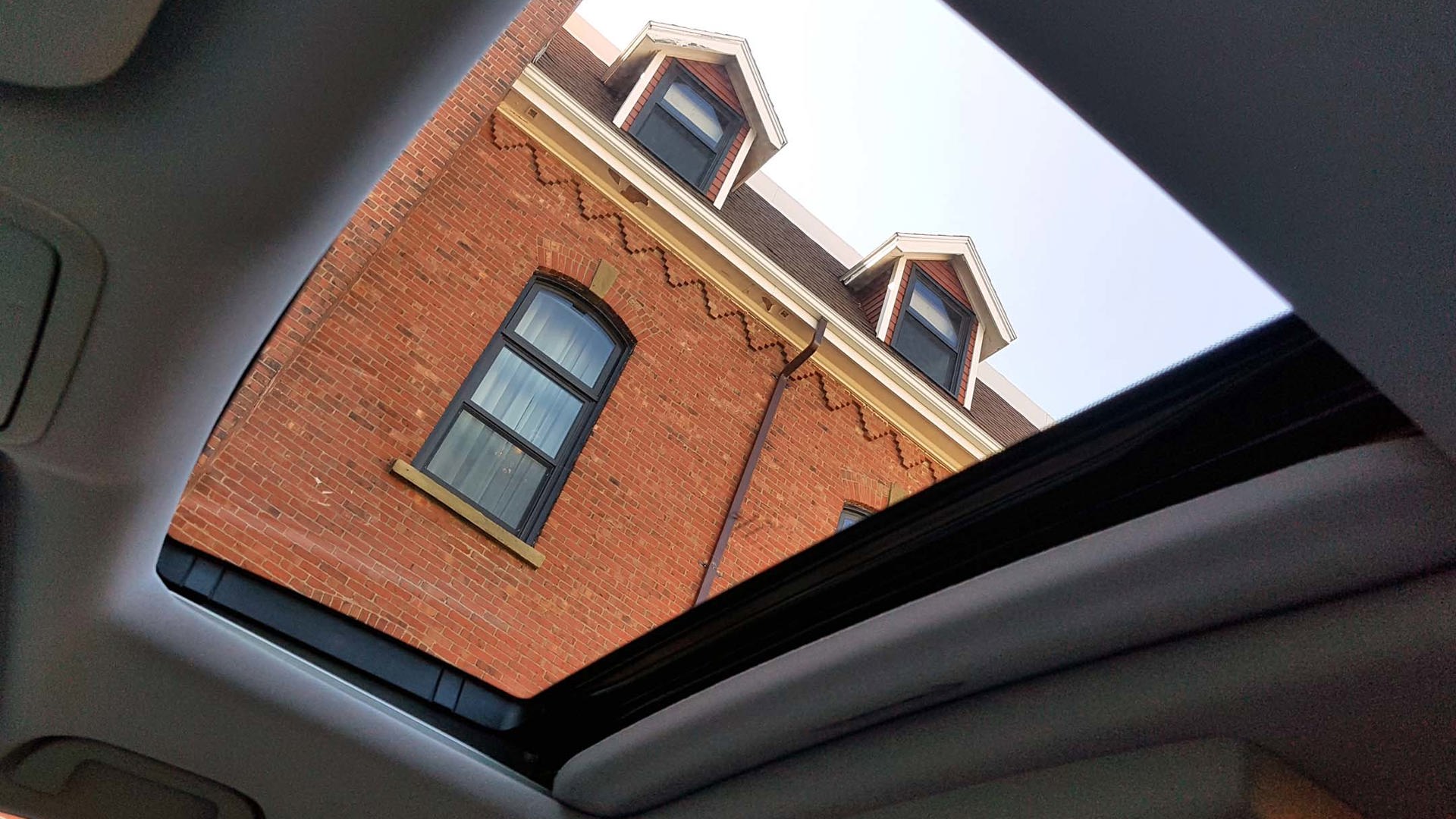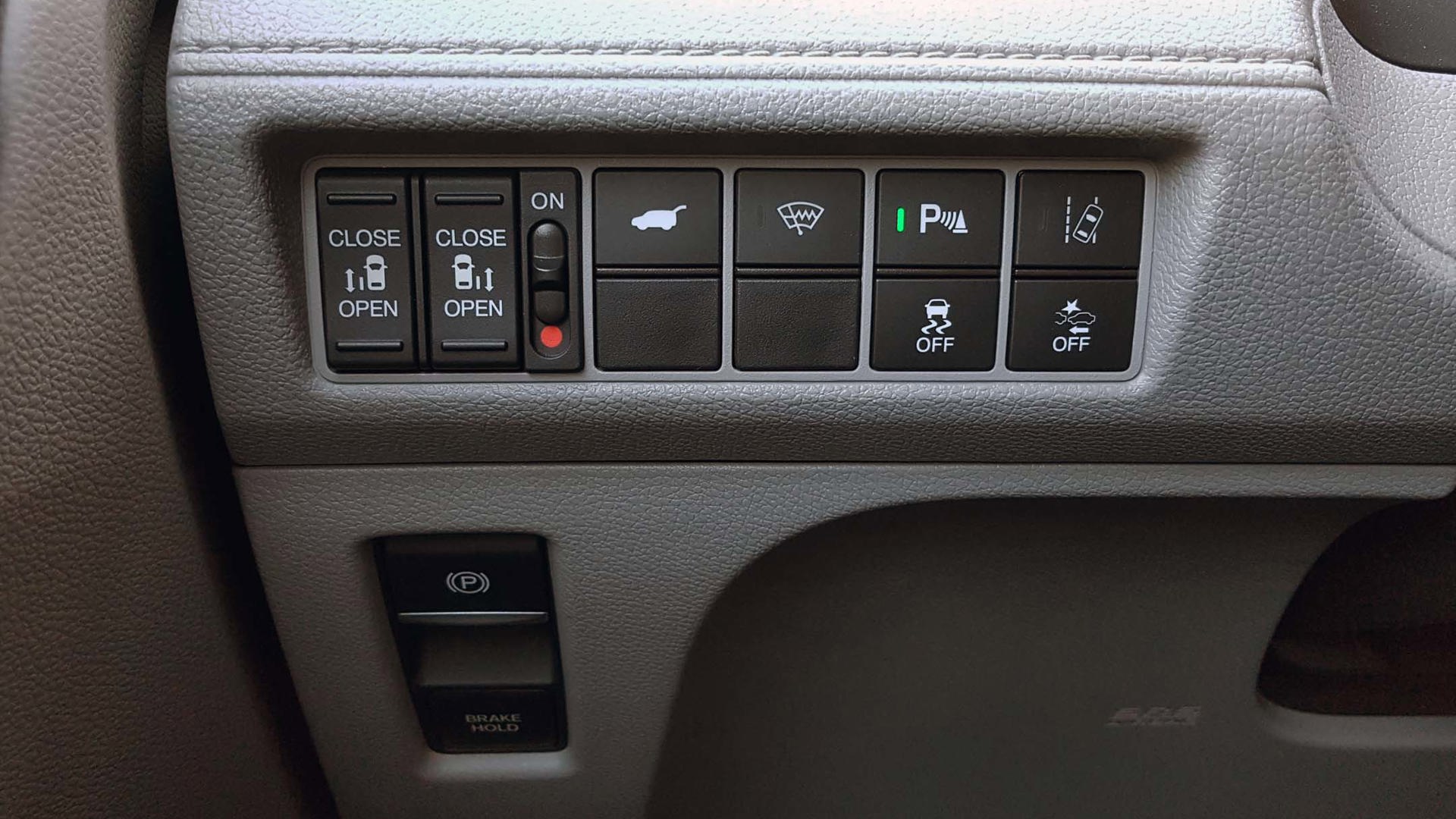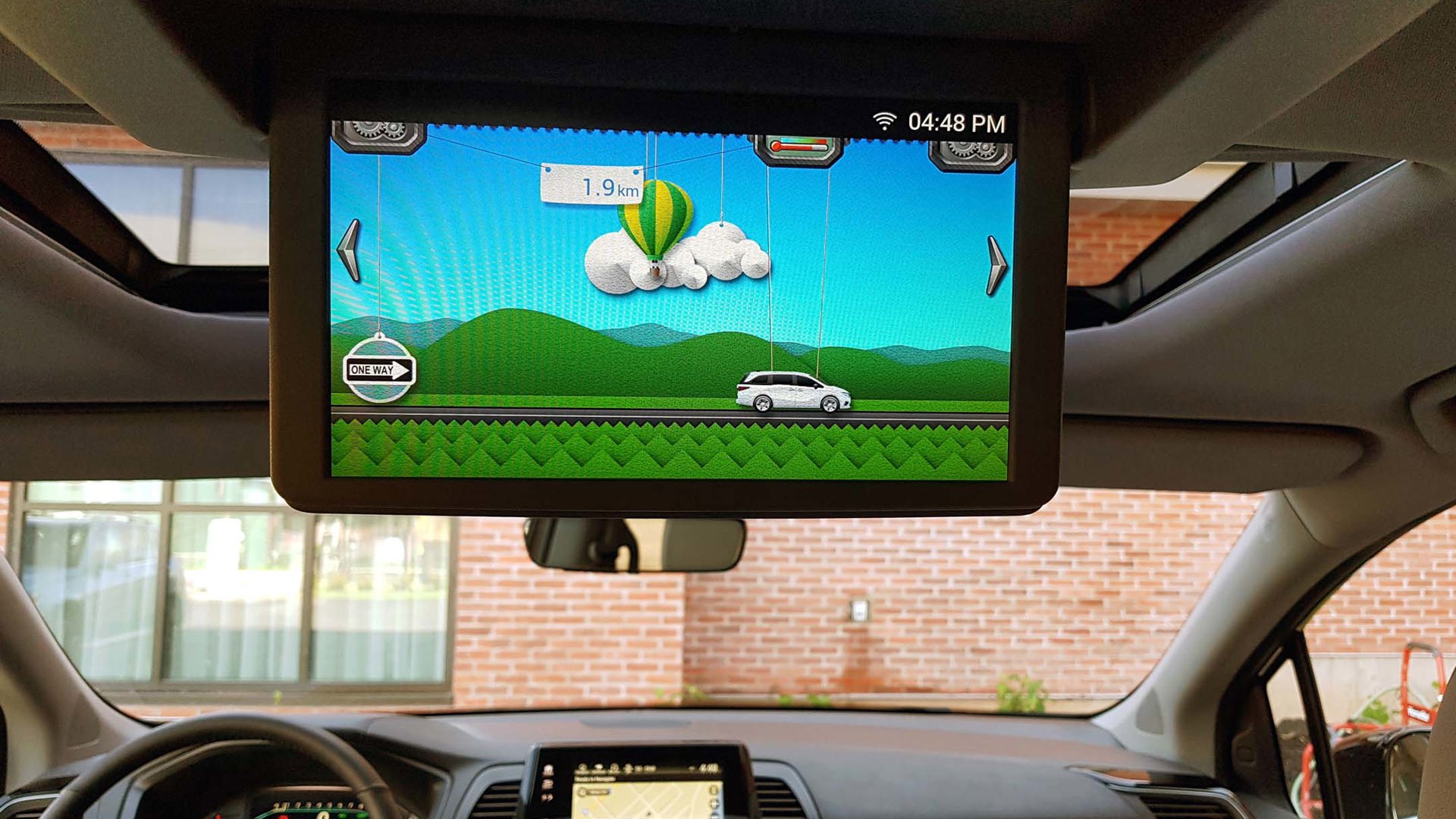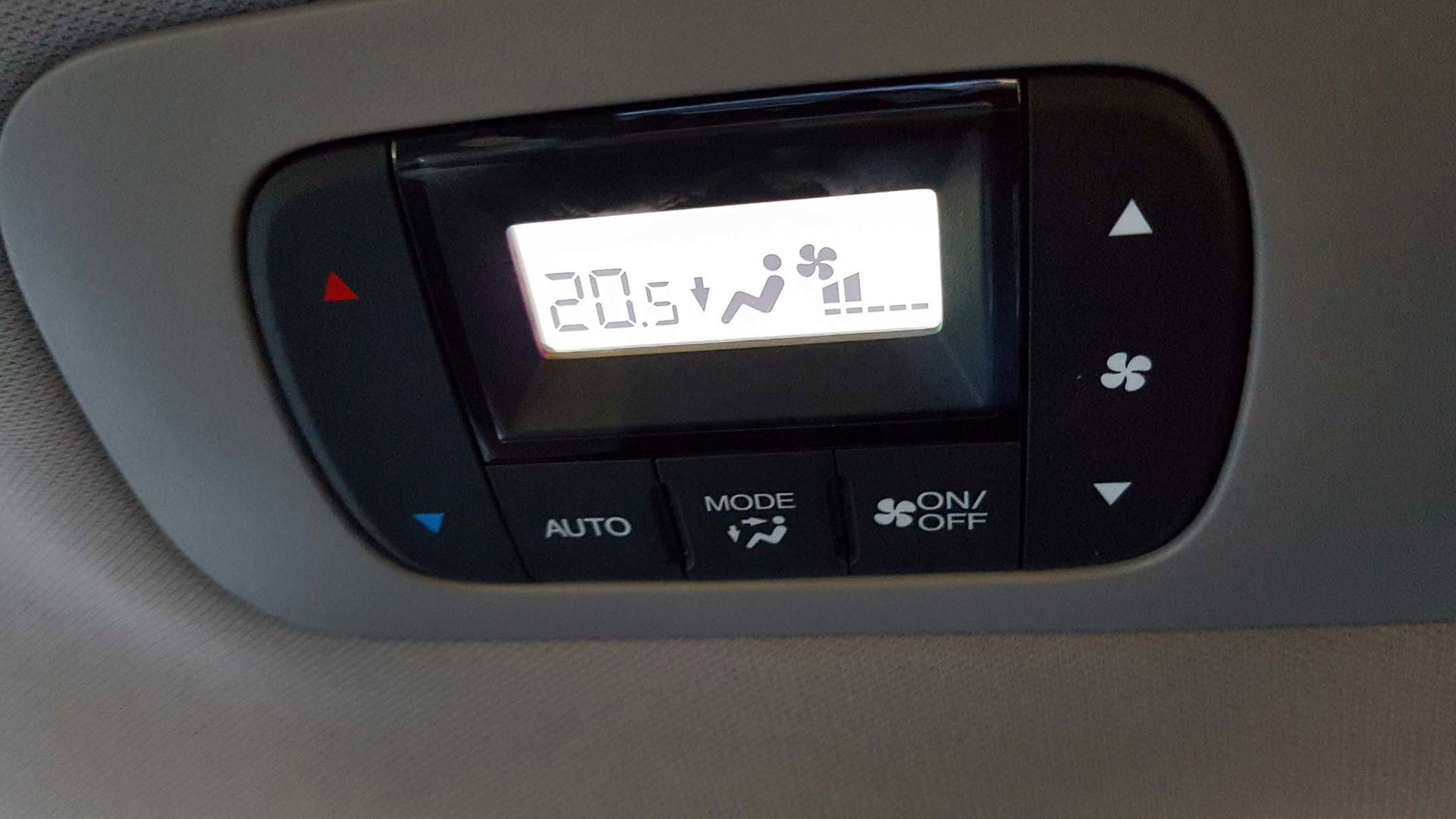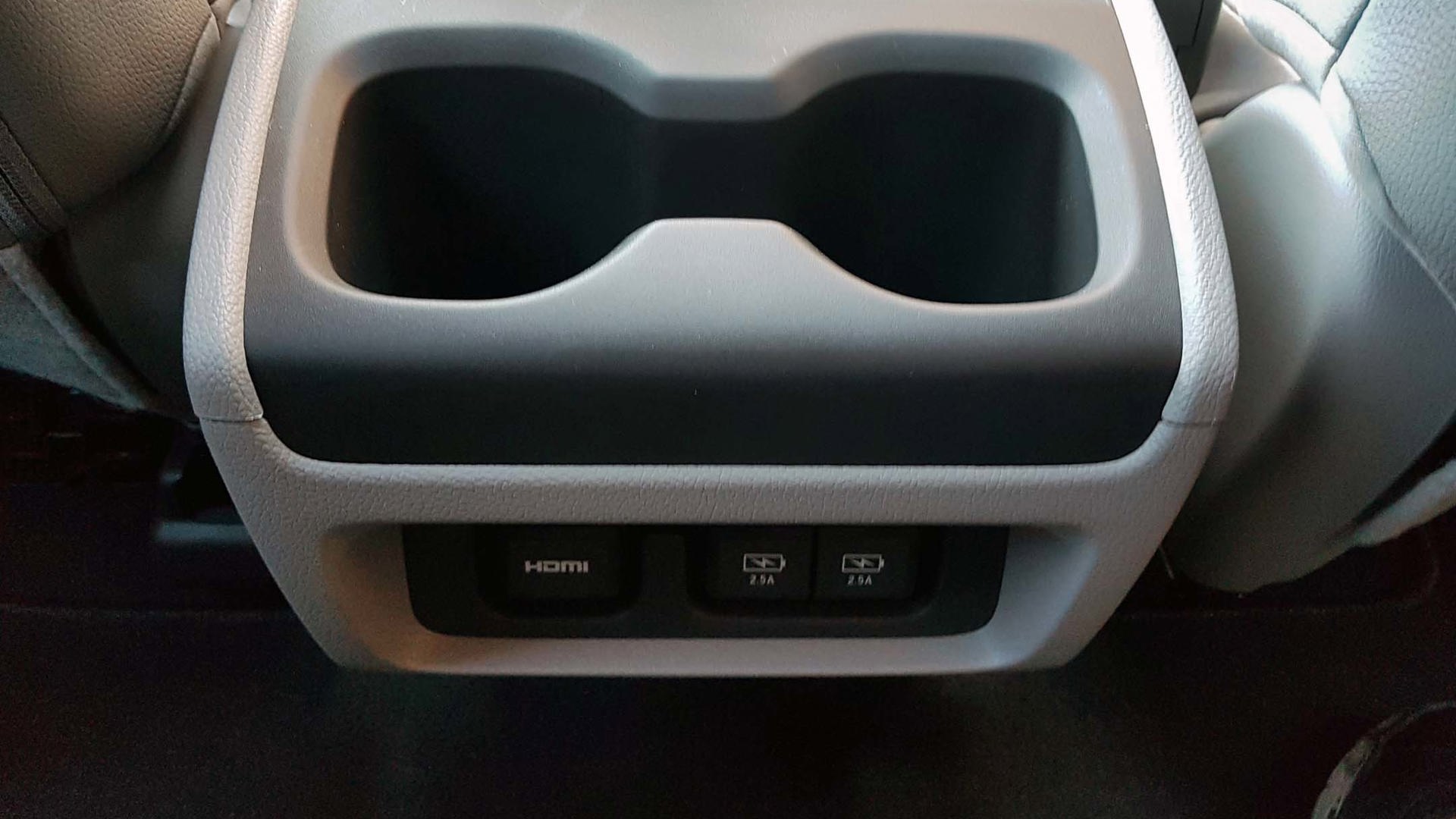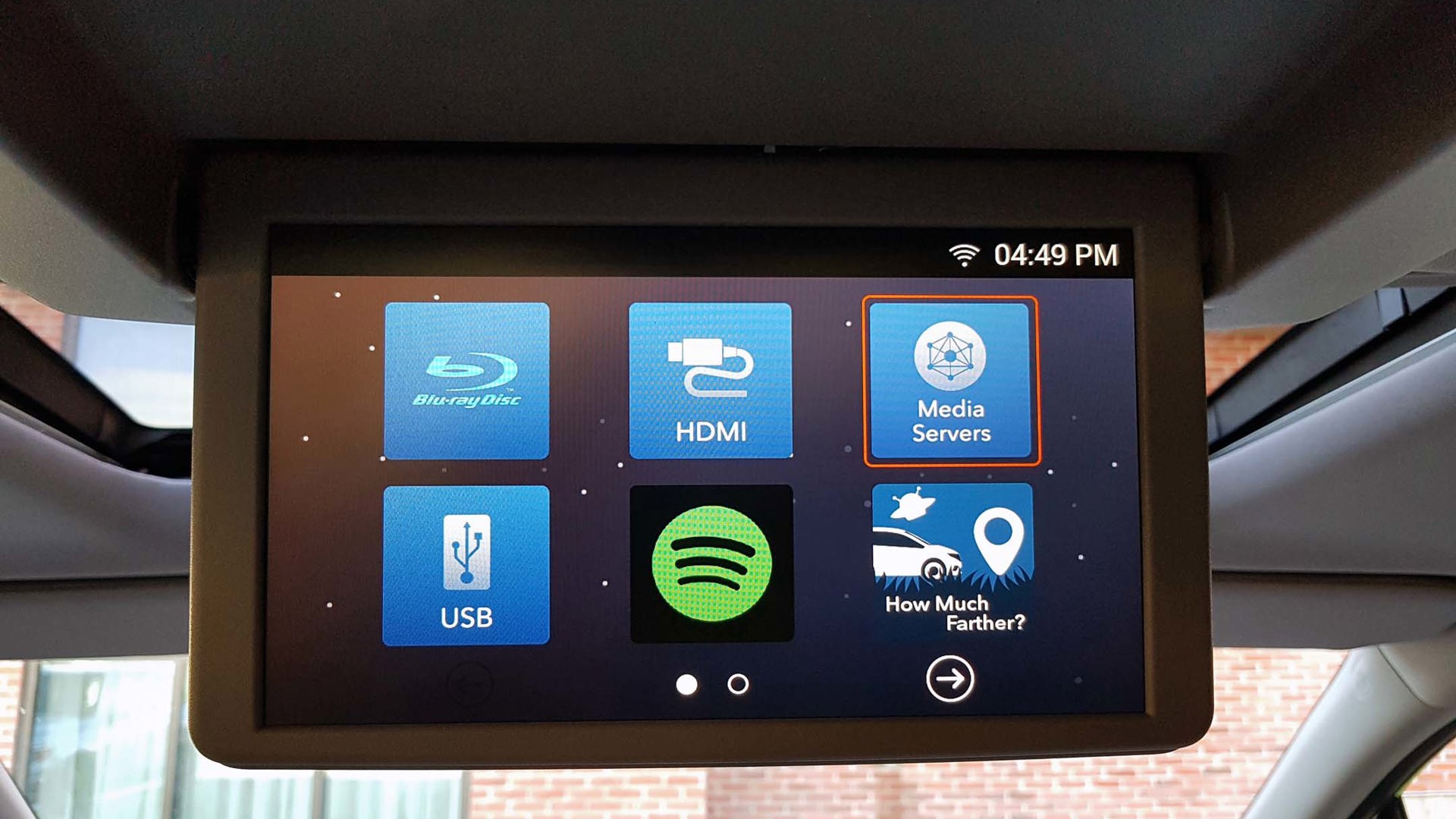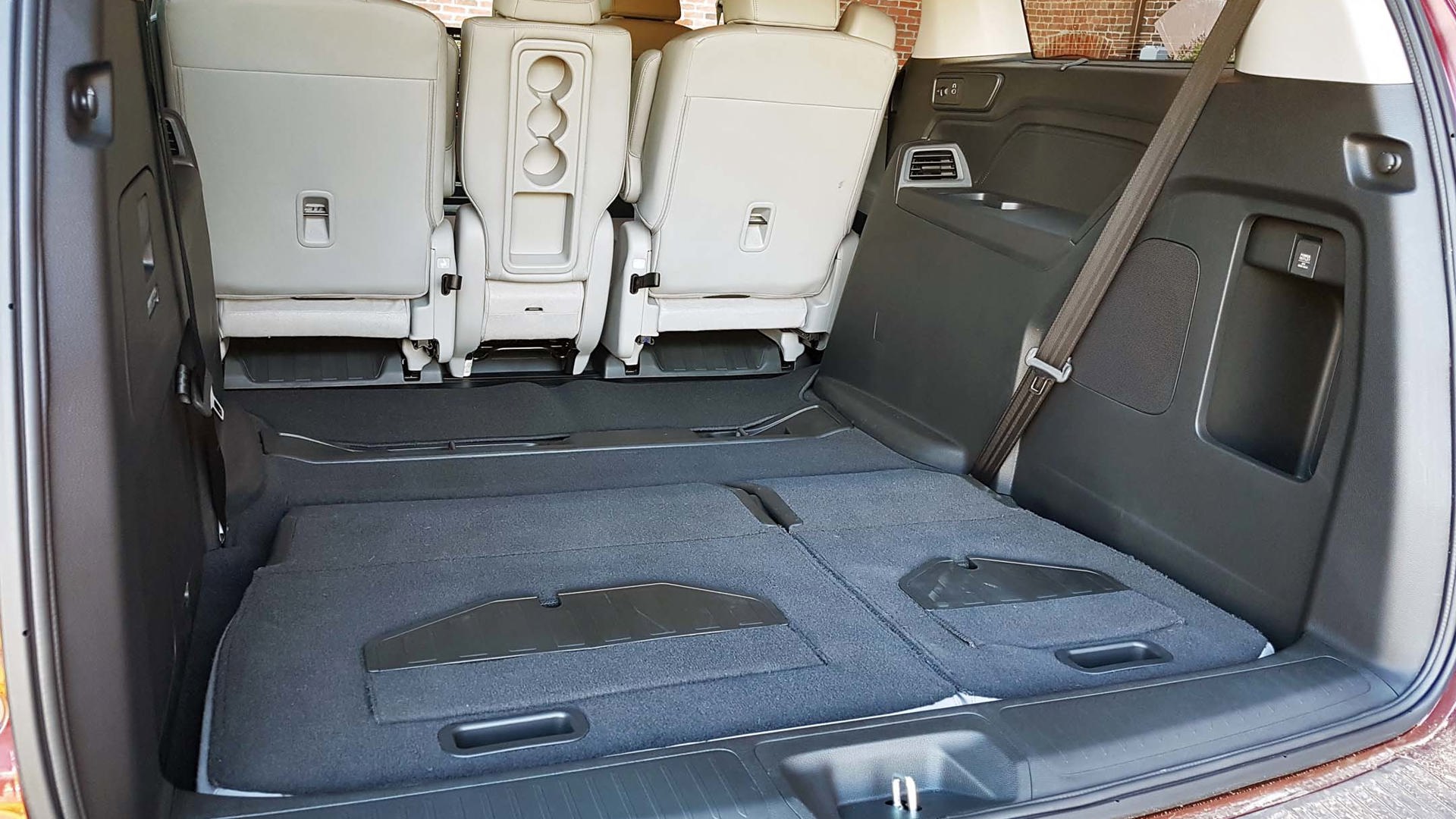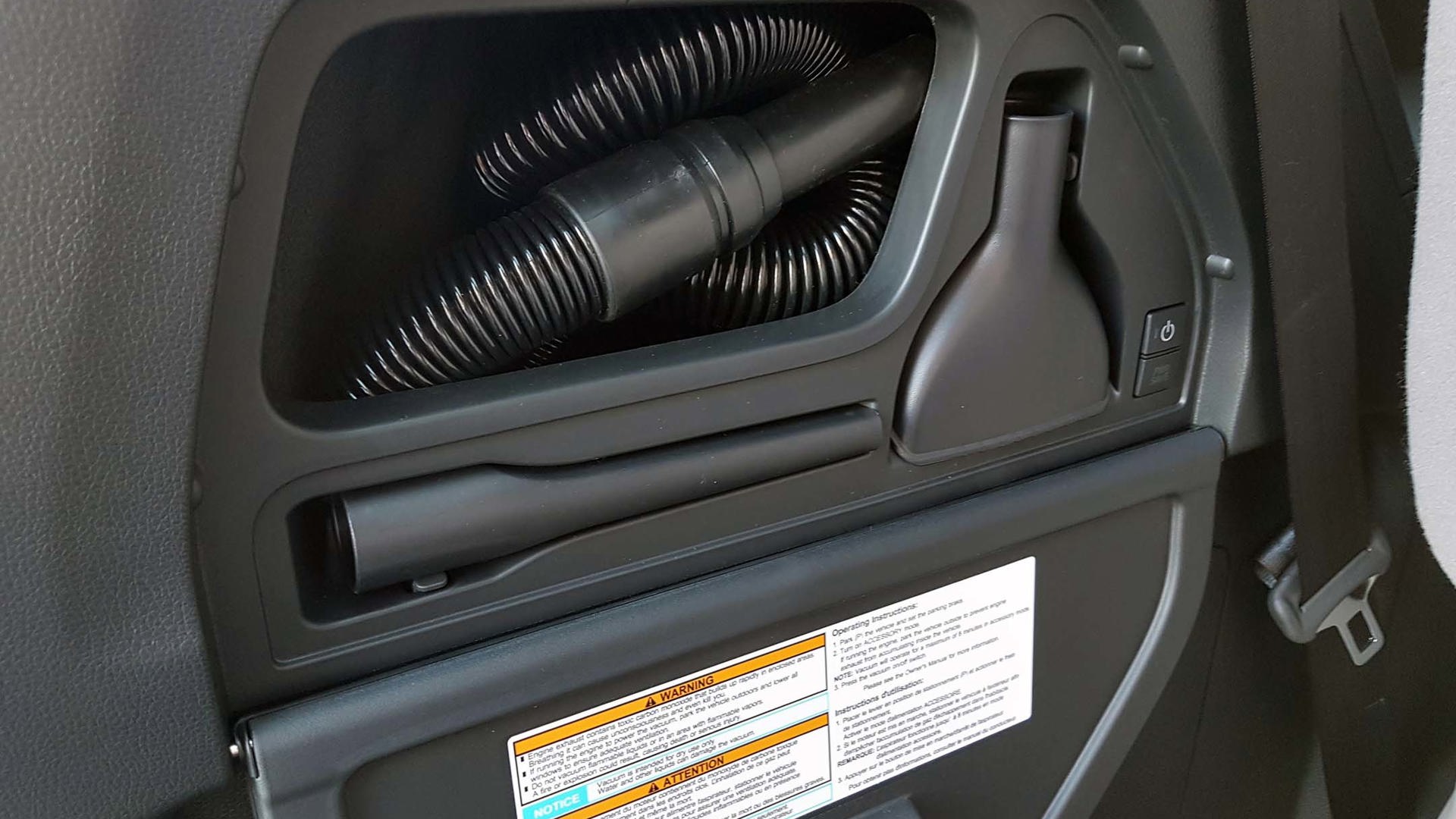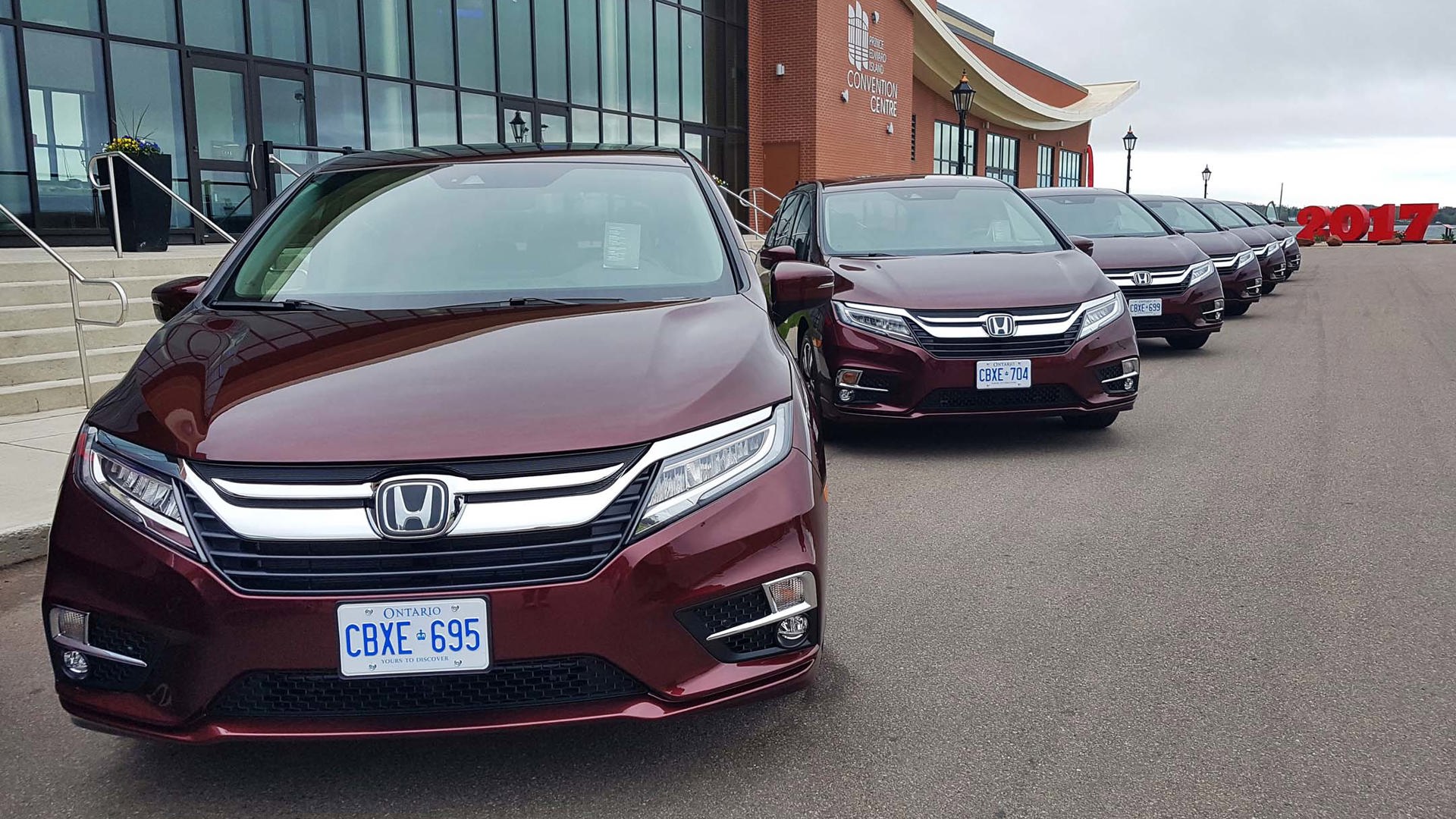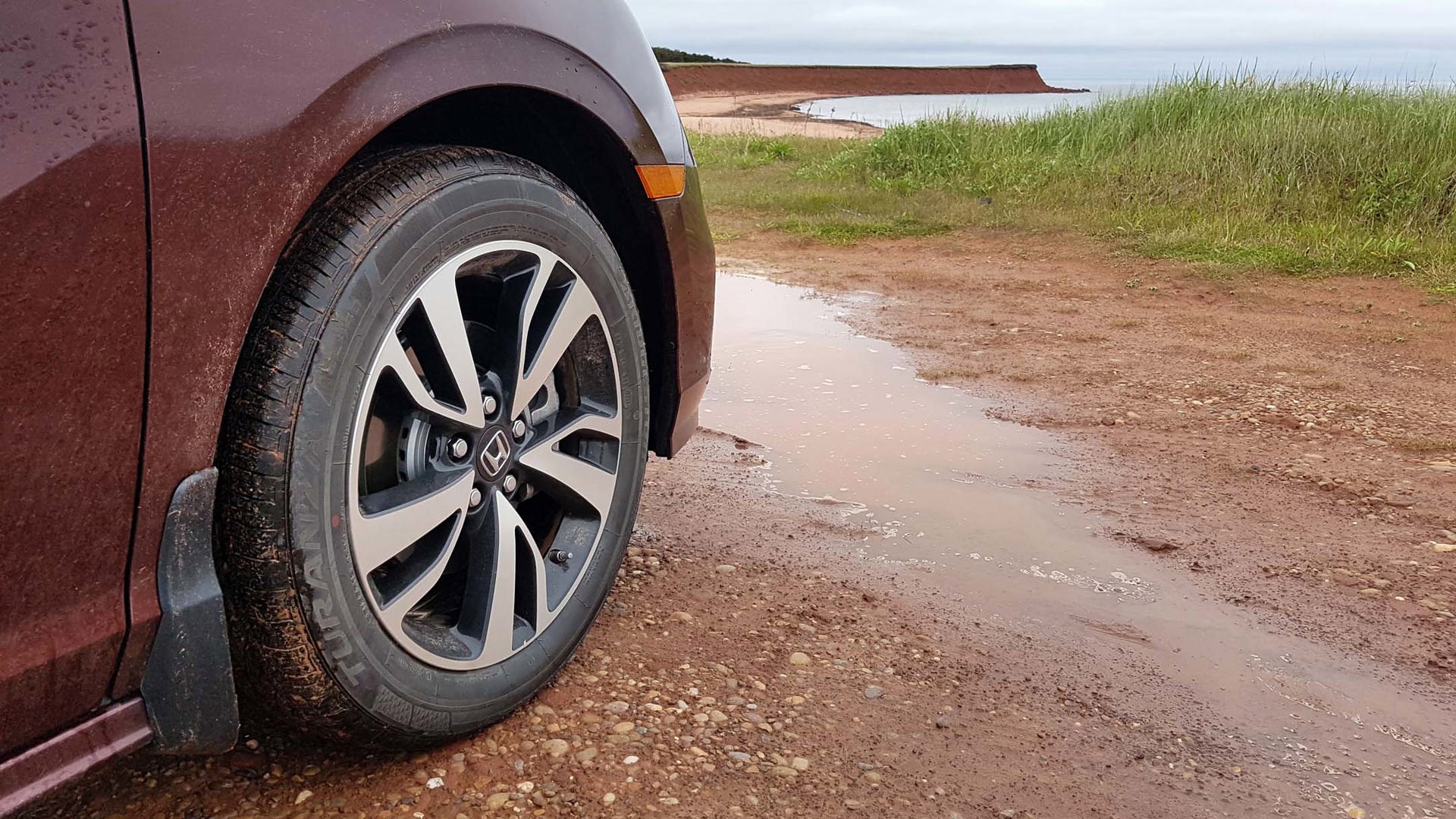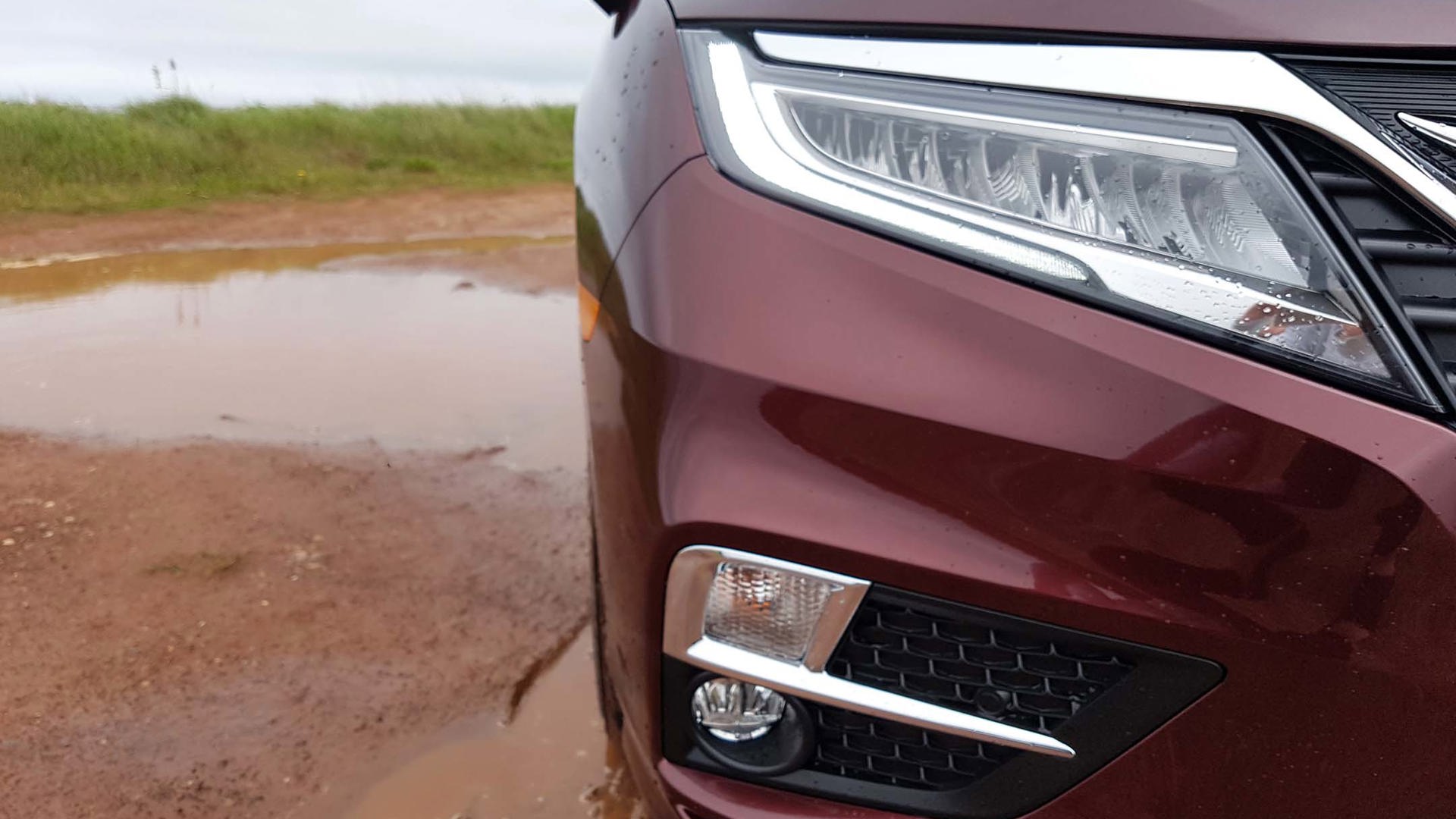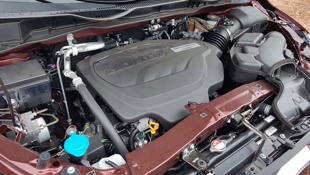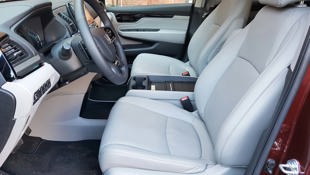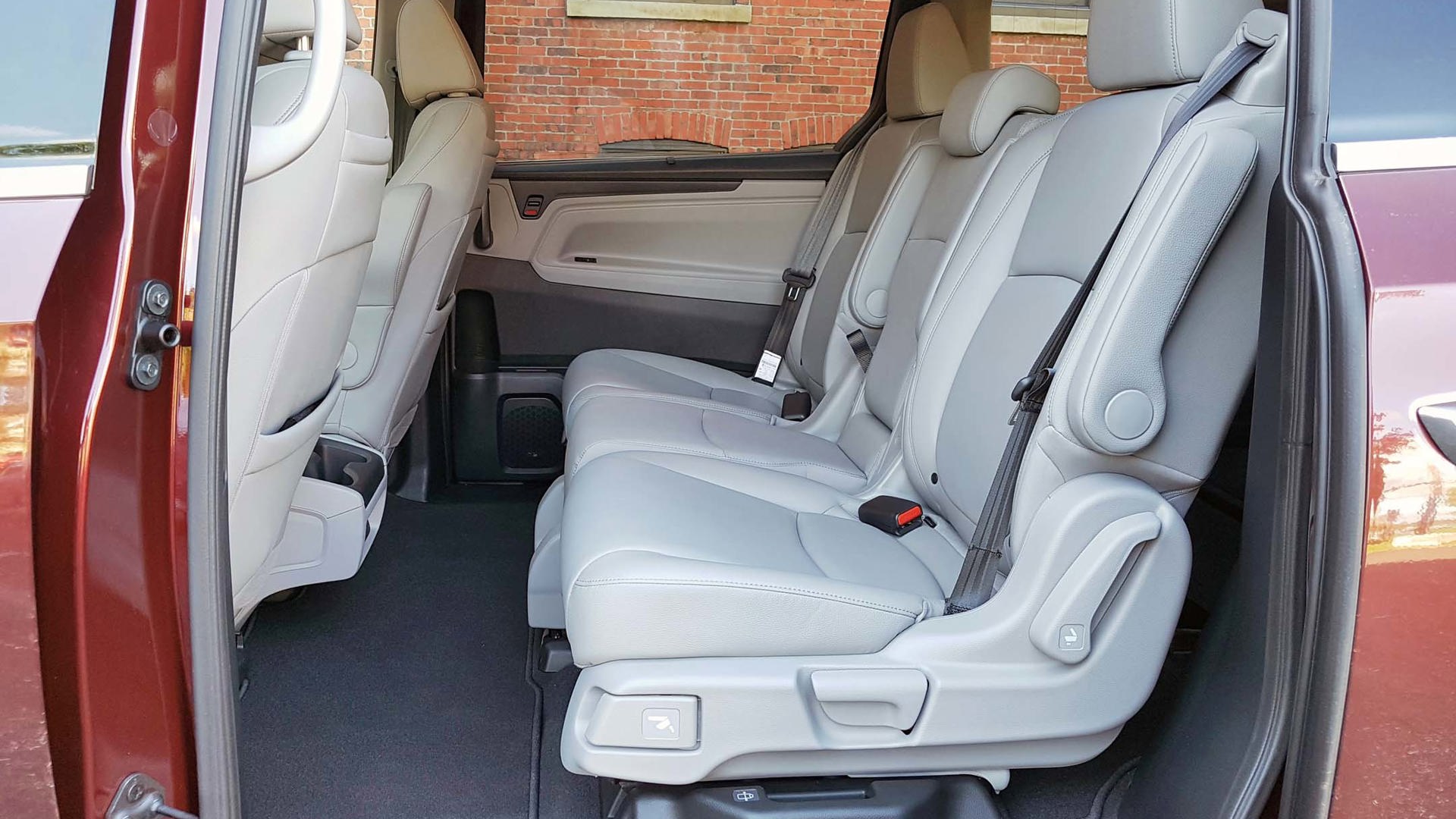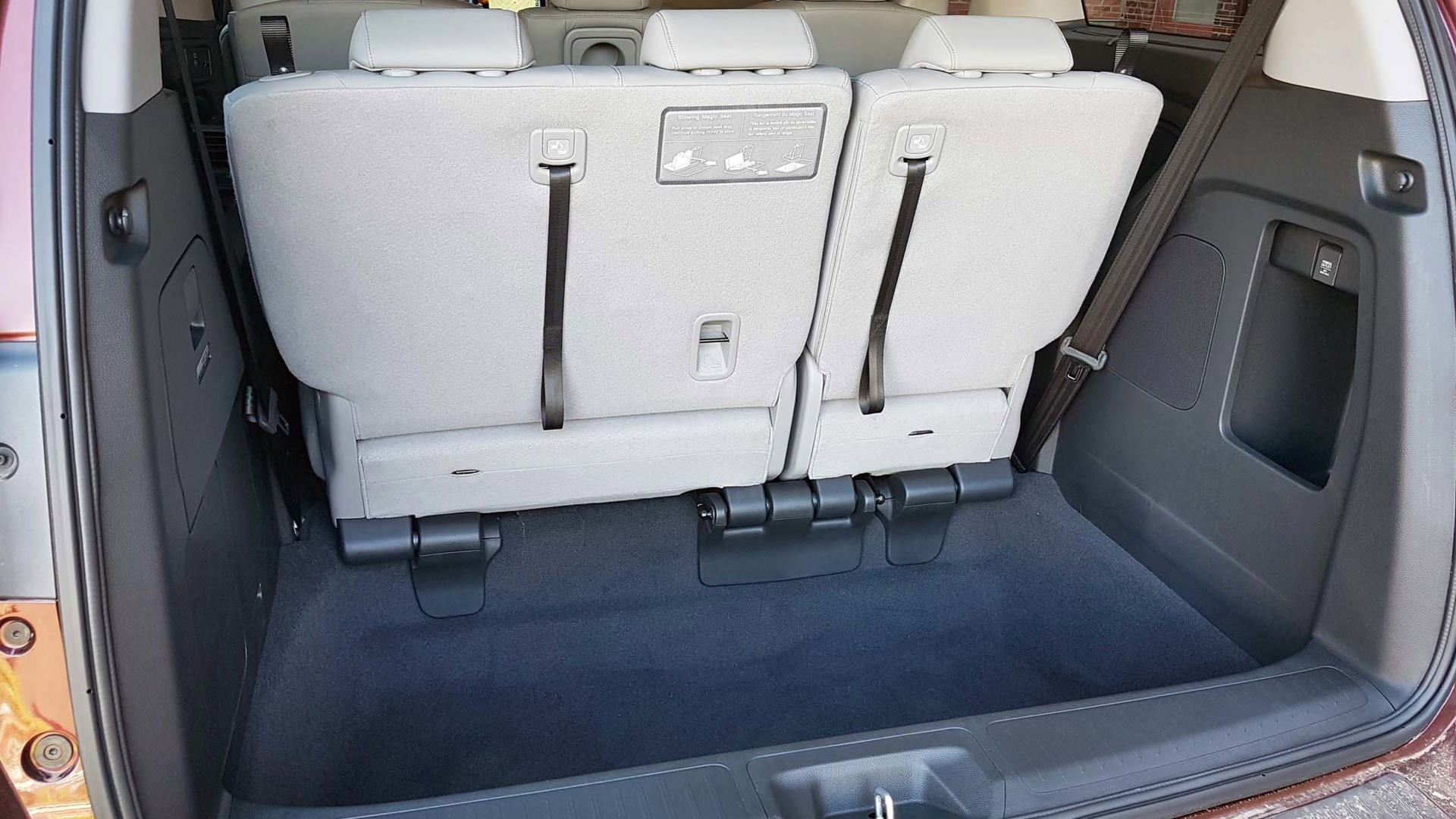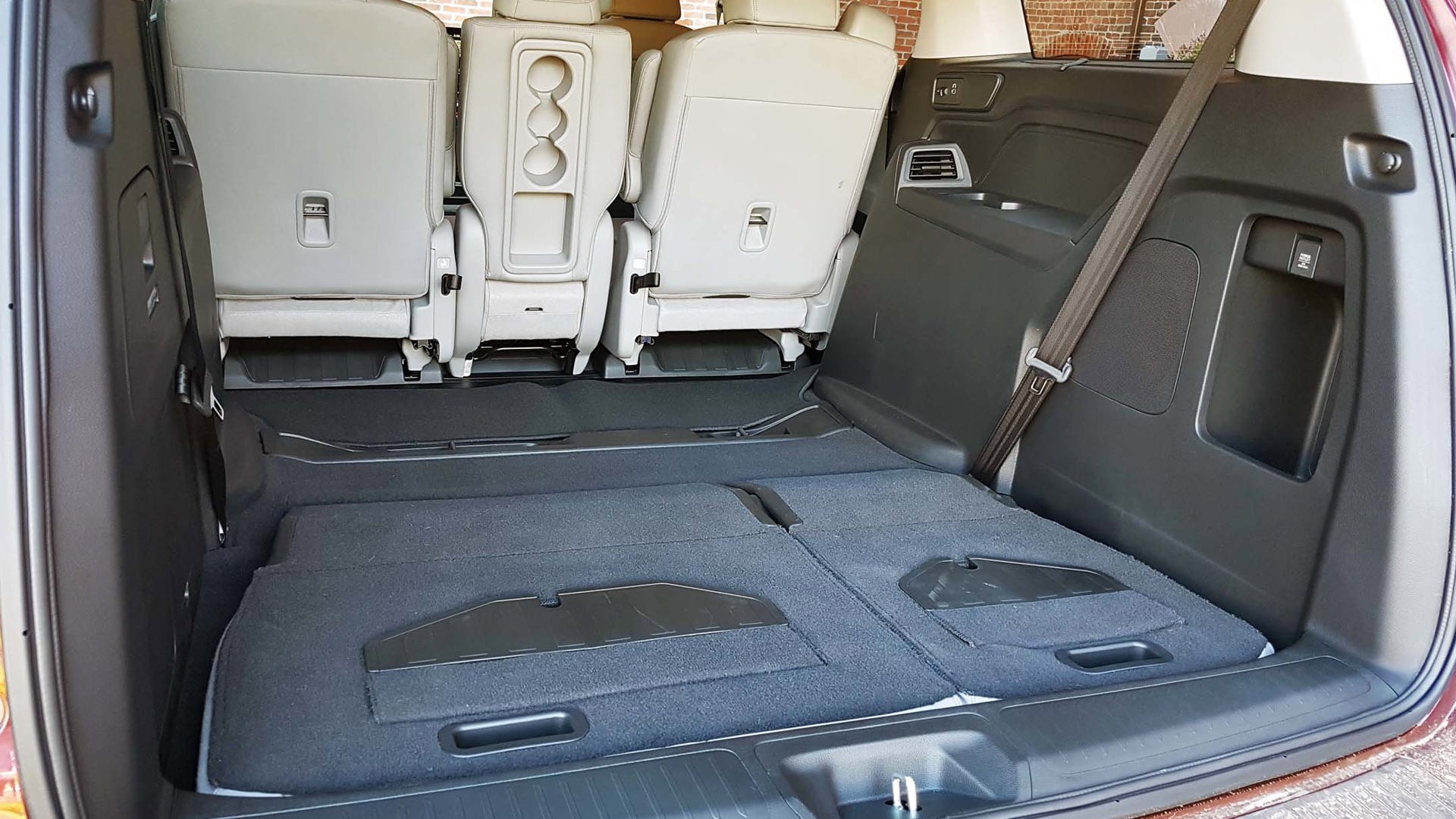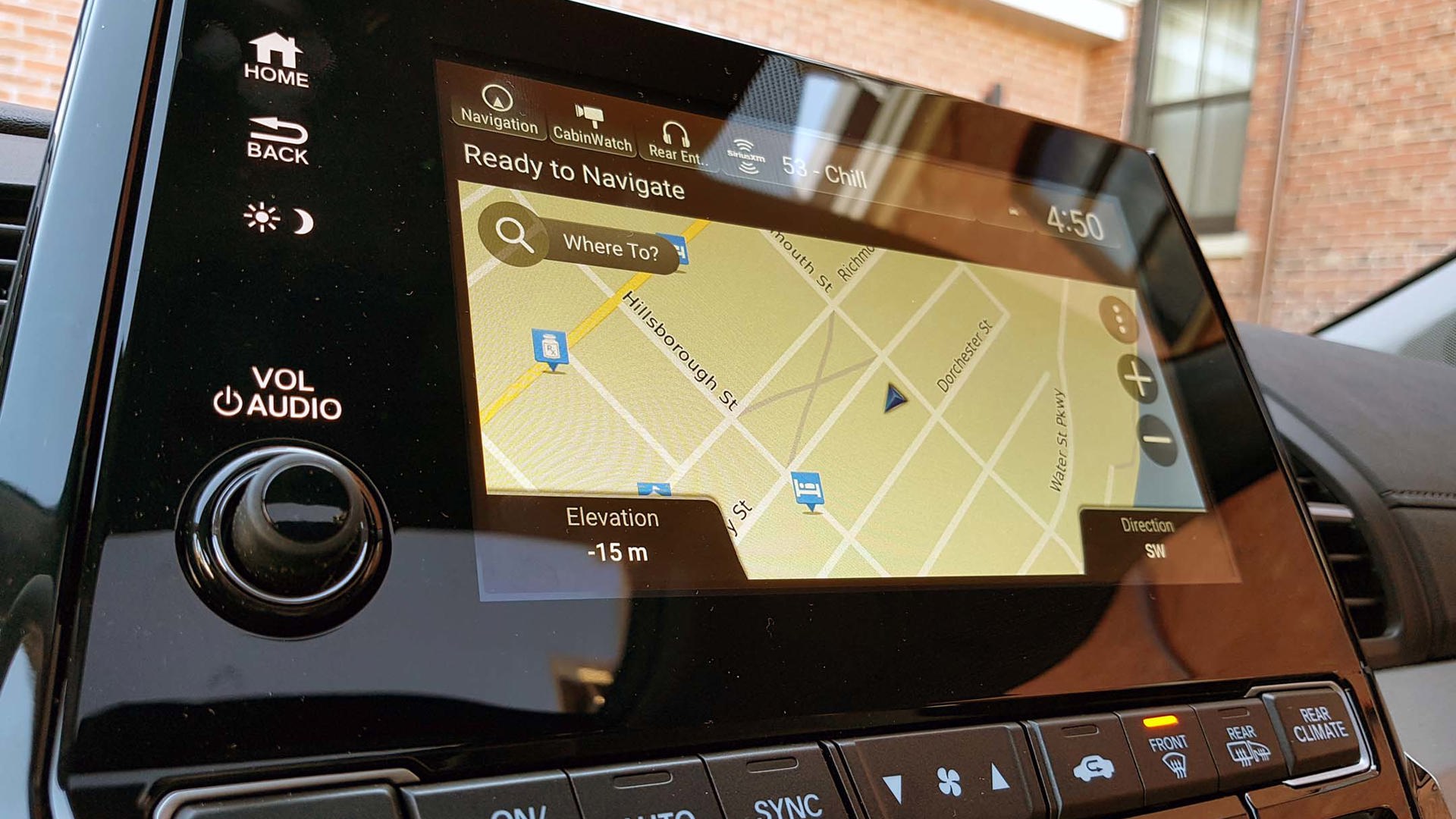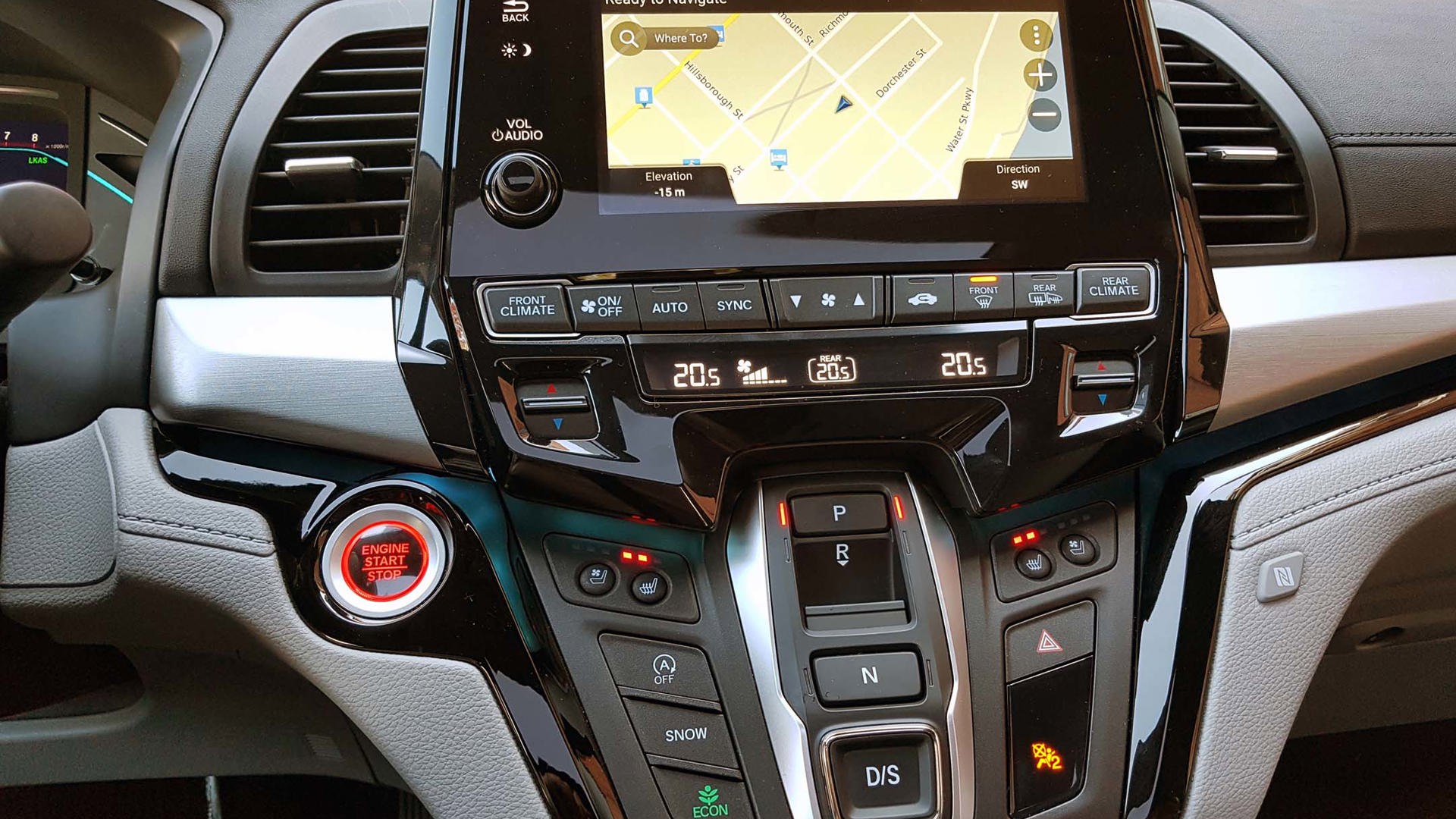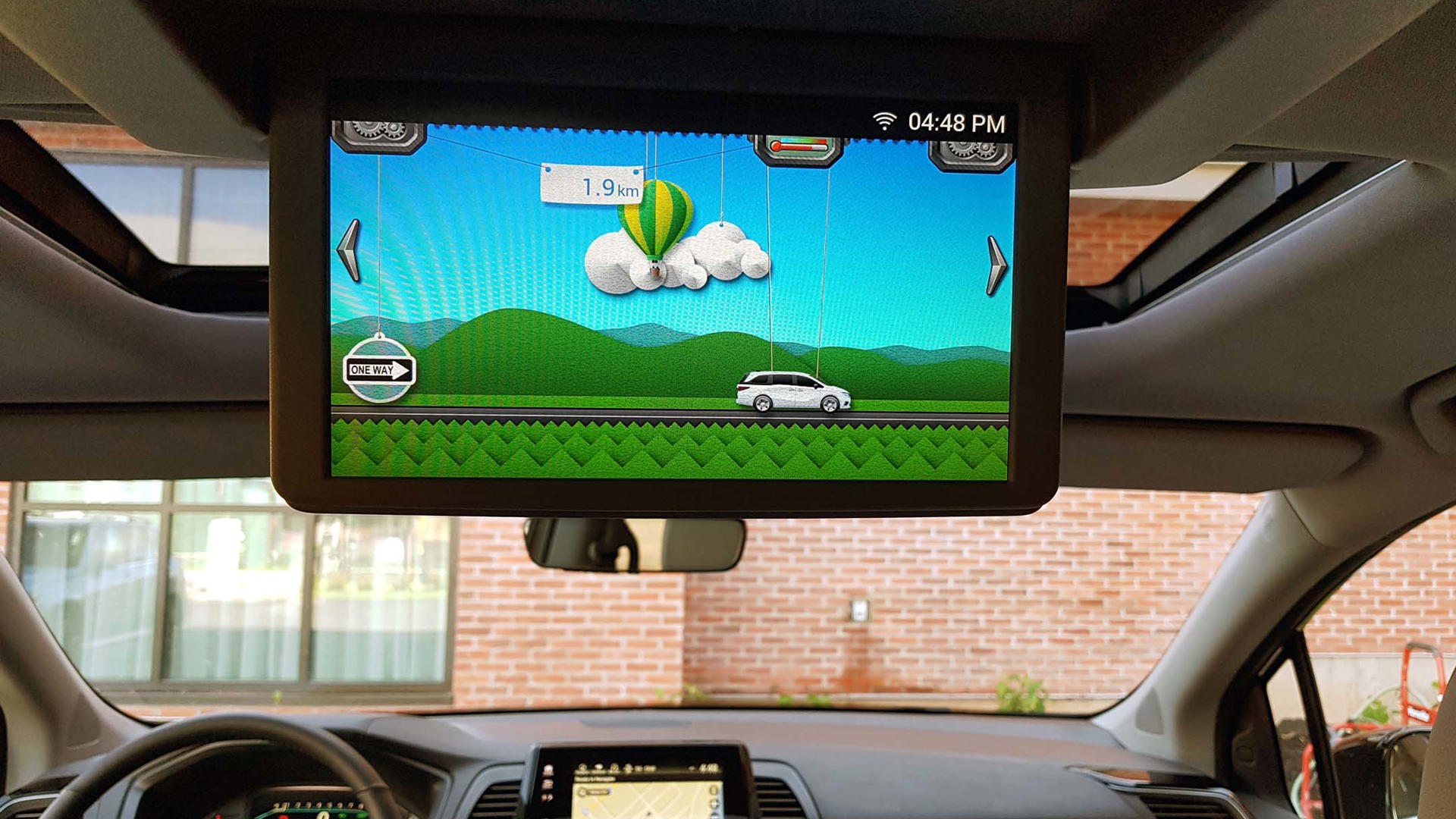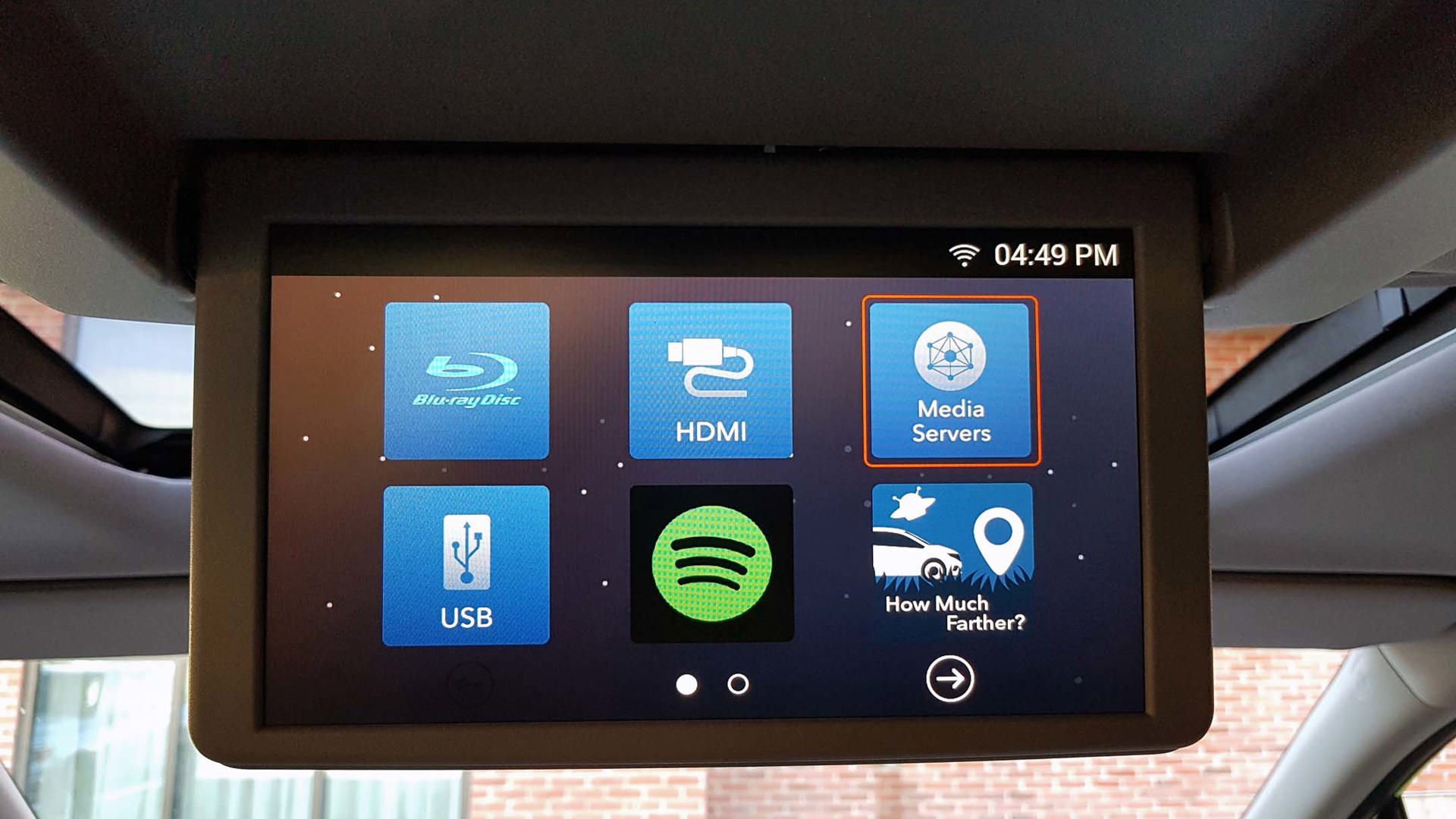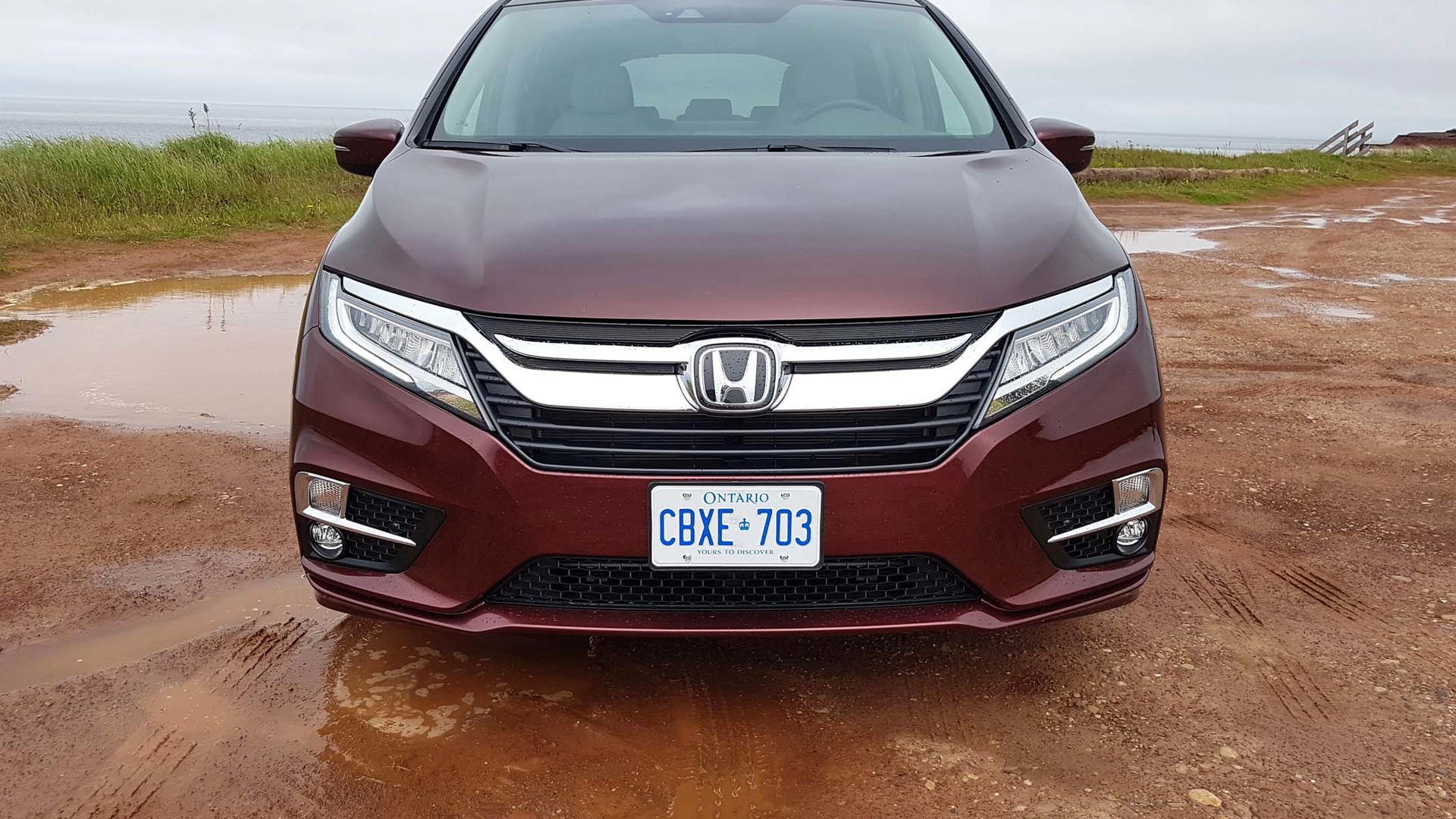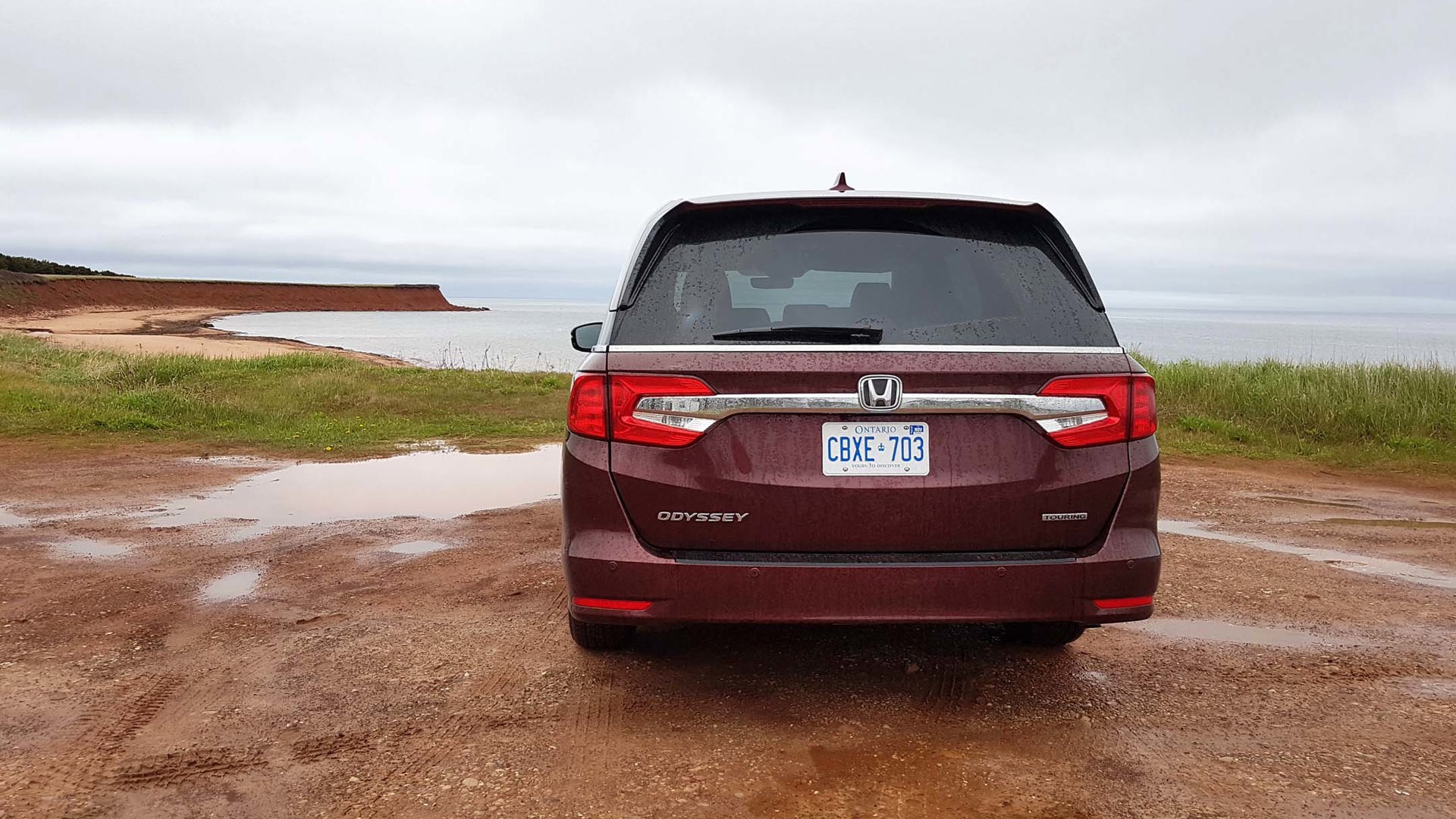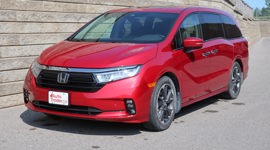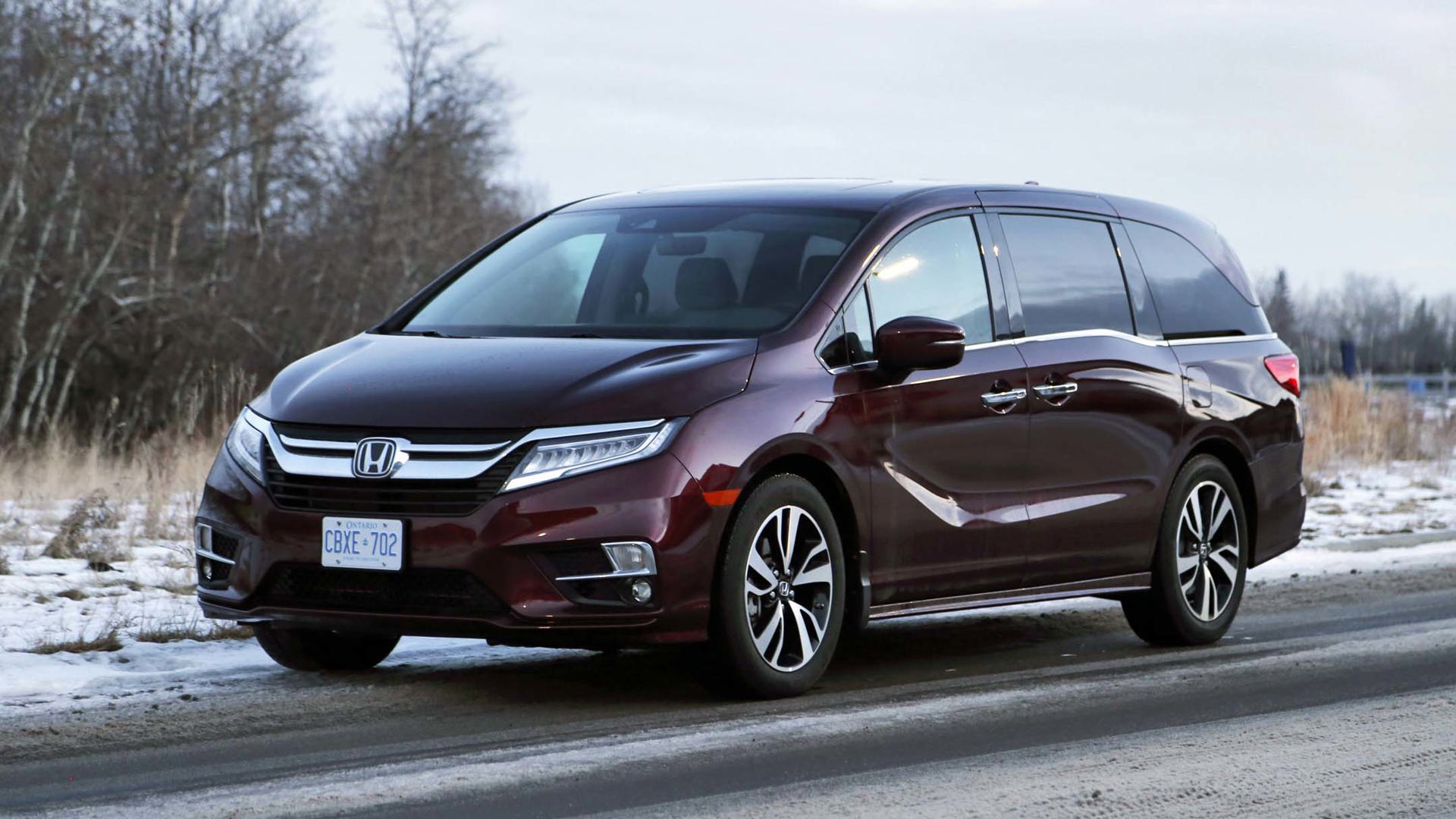A minivan may not be the vehicle you think you want, but it’s probably the one you need.
Where the Odyssey smashes it out of the park is in safety.
The pull of practicality over style is keeping the segment alive, which is what’s motivating Honda to pull a Monty Python – “It’s not dead!” – and continue banking on the box on wheels by redesigning its Odyssey as it pushes into a fifth generation for the 2018 model year.
If you have a household full of people to move around, when you take a closer look at some of the changes they’ve come up with, you’ll not only see why they won’t be putting the Odyssey on the cart for some time, you might even reconsider that three-row SUV you’ve been looking at.
Styling
Exterior styling on a minivan is the major hold-up for a lot of potential customers, which makes it extremely important for designers to get right.
Honda’s team has done a couple of things here that might work for fashion-conscious buyers.
First, the sliding door rail track is now integrated into the bottom of the rear window, just like on FCA’s model line – no more ugly, gaping holes. They’ve also added a floating roof line, which harkens to upscale SUVs like the Lexus RX.
There’s also some deep sculpting on the side panels now where the designers have used light to make the doors look like they end higher off the ground than they actually do. It’s a clever trick.
I’m more of a fan of minivan styling that embraces what it’s working with rather than trying to cover it up, myself. But those who preferred the styling of the previous-generation 2017 Honda Odyssey over that of its competitors are likely to embrace these changes.
Inside, the front row has been opened up noticeably by a redesign of the centre stack that converts the gear shifter into a button arrangement. For some people, the new layout will take some getting used to – I found the buttons to be difficult to get used to, but given the amount of time people spend interacting with the transmission in a minivan, it shouldn’t be much of a detriment for most. And ladies, there’s now a sizeable bucket between the front seats where your handbag will fit securely. (Honda sure knows their market.)
That said, it’s worth noting that the cooled centre compartment option has gone away for the new generation.
I particularly enjoy Honda’s instrument cluster, which in the new Odyssey puts the information that its drivers will want most such as the speed, fuel gauge, and fuel economy front and centre and very easy to assess at a glance.
Driving
The new Odyssey comes with an engine upgrade to the same 3.5-litre naturally aspirated V6 used in the Honda Pilot. This gives 2018 models a 30 hp and 12 lb-ft jump over the outgoing version for a total of 280 hp and 262 lb-ft.
The base transmission comes from the Pilot as well, a nine-speed automatic (as the premium offering in that application). Here, the top-of-the-line gearbox is a brand new 10-speed automatic, the first planetary automatic transmission that Honda has ever manufactured in-house.
It was the latter that I tested on the pastoral roads of Prince Edward Island in the top-tier Touring trim. All together, this powertrain feels excellent. The power feels right for the weight, shifts are smooth, and it kicks down very quickly when the throttle gets a jab. In this sense, driving the Odyssey feels effortless.
Both combinations also deliver best-in-class fuel economy: 10.7 L/100 km combined with the nine-speed and 10.6 with the 10-speed (the upcoming Chrysler Pacifica Hybrid is expected to best these numbers, however). My driving partner and I observed 9.9 over our day exploring PEI, and there are very few roads on the island that could truly be considered highways.
One thing you can’t get now and never will in the new Odyssey is all-wheel drive. When FCA launched the Pacifica last year, they left all-wheel drive off but reserved space in the design that allows them to add it later if they choose. In the Odyssey, Honda’s engineers have decided to forego the potential entirely in favour of lowering the floor to allow for easier in-and-out passenger access. The upshot is that if all-wheel drive is something you want in a minivan, the Toyota Sienna is still your only option in Canada.
In terms of handling, the Odyssey isn’t quite as revolutionary. It’s smooth with minimal body roll, but I never found myself fooled into thinking I was driving anything but a minivan. Unlike the Pacifica, which feels taut and almost sedan-like, the Odyssey still seems wide and bulky while moving around. This could be helped by tighter steering – gentle curves aren’t bad, but it takes a pretty wide swing of the wheel to get around corners in intersections. We were testing pre-production models, though, so this might be different in the vans that land on dealer lots. Think of it as something to assess yourself in a test drive before making a buying decision.
Where the Odyssey smashes it out of the park is in safety. The Honda Sensing suite of safety features – which includes adaptive cruise control, lane-keep assist, lane-departure warning and road-departure mitigation, forward collision warning, and collision-mitigation braking for vehicles and pedestrians – is standard all the way down to the base model. The only things you’ll need to upgrade for are the Lanewatch side-view camera (which I’ve never especially cared for anyway) and a blind-spot information system (which, unfortunately, is only available on the Touring trim).
Seating and storing
This is a subject worthy of its own discussion.
Yes, the front seats are very comfortable, particularly the 12-way power adjustable driver’s seat available in everything but the base model. Even with my tall body and short limbs, I was able to get close enough to the wheel to be comfortable and in the optimal driving position while still being able to see everything and have the screens and dials I need within reach.
But where this topic gets especially interesting is when you move to the back.
The third row hasn’t changed much, but it didn’t really need to: it’s still plenty spacious, and it still folds into the rear cargo area to leave behind a flat loading floor. Behind the second row, there’s room for up to 2,526 litres of stuff, which beats the Chrysler Pacifica (2,478), Toyota Sienna (2,466), Kia Sedona (2,220), and Dodge Grand Caravan (2,359).
And the full loading floor is large enough to accommodate a 4'x8' sheet of plywood, but you’ll still need to remove the second-row seats entirely and leave them in your garage if you want to take advantage of it.
But boy, are those second-row seats ever interesting.
The two outboard positions are captain’s chairs by default – and if you want a third seat in the second row, it wedges in nicely between them. (There’s nowhere in the van to store it comfortably, though, so you’ll want to plan to leave it at home if you don’t need it.)
Both outboard seats move forward and backward, which allows for access to the third row even with a child seat installed. But leave the middle seat out and they also move left and right. With one seat all the way over to one side, the other has four positions it can lock into. This means both seats can be all the way over together to the left or right, together in the middle, or split apart with a wide gap in the middle if you have squabblers to deal with.
And in spite of this, the Odyssey still has five positions that can accommodate child seats all at the same time using the LATCH system (and a sixth in the third row if you don’t mind securing it with a seat belt). The middle seat in the second row is pretty narrow, so it may take some strategic purchasing and positioning of seats to be able to make use of them all. But from Honda’s perspective, it’s covered.
Everyone will ride in serenity as well – between improved body rigidity, triple door seals, acoustic spray foam, better carpeting and liberal use of acoustic glass, exterior noise is kept at a minimum. You could probably communicate with third-row passengers without making use of any of the new tricks you’re about to read about.
Connecting
The new Odyssey’s infotainment system is significantly better than the previous one, though it still leaves some room for improvement.
Its redesigned tablet-like interface is much more intuitive, and the return of the volume knob is worthy of much rejoicing. Like in the new CR-V, though, it’s awkward and a little too distracting to have to stab at the touchscreen just to change radio stations. Still, it’s progress, and Android Auto and Apple CarPlay are available as alternatives if you prefer them.
The rearward entertainment system is still the roof-mounted pull-down screen controlled by a handheld remote. Whether this is better than the individual screens in the Chrysler Pacifica depends greatly on your family’s needs – for just two rearward passengers the Pacifica’s system offers much more flexibility including individual game play, but if you have more than two to keep entertained then the Odyssey’s system is easier for everyone to see. This includes the new How Much Farther app that uses the navigation system to let kids monitor drive progress on their own to mitigate cases of the are-we-there-yets (which, not coincidentally, is the name of the Chrysler Pacifica’s on-board app that looks an awful lot like this one).
On the other hand, there’s now available subscription-based on-board 4G LTE Wi-Fi in the Touring trim, so if any of those passengers are teenagers then they’ll almost certainly be happier occupying themselves with their own handheld devices anyway.
If they download the Cabin Control app, they can also control the front audio system, rear entertainment system, rear HVAC, and on-board navigation directly from those devices, and they can use the social playlist function to select and queue up songs. (You can set which of these functions can be accessed remotely as well so that you don’t suddenly find yourself being directed to the nearest fast food joint.)
The HondaLink app, a first for Honda, works with the Odyssey to allow for remote engine start, door locking and unlocking, a virtual dashboard, a car locator (my husband would lose his own nose if it wasn’t attached to his face, so I could see this coming in handy in mega-mall parking lots), geofencing that allows you to be notified if a particular driver leaves a defined geographical area, a speed alert, remote destination setting in the navigation system, and automatic collision notification. The onboard Wi-Fi is included in subscription pricing for HondaLink, which including all of the features listed above costs $129 per year.
Honda has also introduced available CabinWatch, a system that allows front-row occupants to check in on the back two rows via a rear-mounted camera (including a night vision mode), and CabinTalk, which can pause the infotainment system and project your voice backward through the speakers or a connected set of headphones.
Buying
The value proposition, especially on lower-trim Odysseys, is remarkable.
At the base LX trim, which starts at $34,890, buyers get the Honda Sensing safety suite, the standard 3.5-litre V6 paired with the nine-speed automatic transmission, 18-inch alloy wheels, heated front seats, the Magic Slide second-row seats, a proximity key with remote engine start, the 8" display audio system with smartphone app compatibility, an eight-way power adjustable driver’s seat, automatic high beams, and functionality for the Cabin Control app.
At EX ($38,090, or $39,590 with the rear entertainment system), the on-board vacuum is added, as is a 12-way adjustable driver’s seat with lumbar support, power sliding doors, a power moonroof, LaneWatch, LED daytime running lights, fog lamps, a second-row armrest and sunshades, and tri-zone automatic climate control.
At EX-L (priced at $44,590 with either navigation or the rear entertainment system, not both), a power tailgate is equipped with programmable height and a heated steering wheel is added along with memory seats and mirrors, leather upholstery, satellite radio, and front and rear parking sensors.
The top-tier Touring trim ($50,290) is the only way to get the 10-speed automatic transmission with engine stop-start capability, 19-inch alloy wheels, the CabinWatch rear seat monitor, 4G LTE Wi-Fi, a hands-free power liftgate, ventilated front seats, a blind-spot information system (and rear cross-traffic monitor replaces the LaneWatch system), a wireless charging dock, LED headlights and fog lights, a 13-speaker sound system, HondaLink subscription services, and the How Much Farther app.
The 2018 Honda Odyssey begins arriving in Canadian dealerships on June 8.
